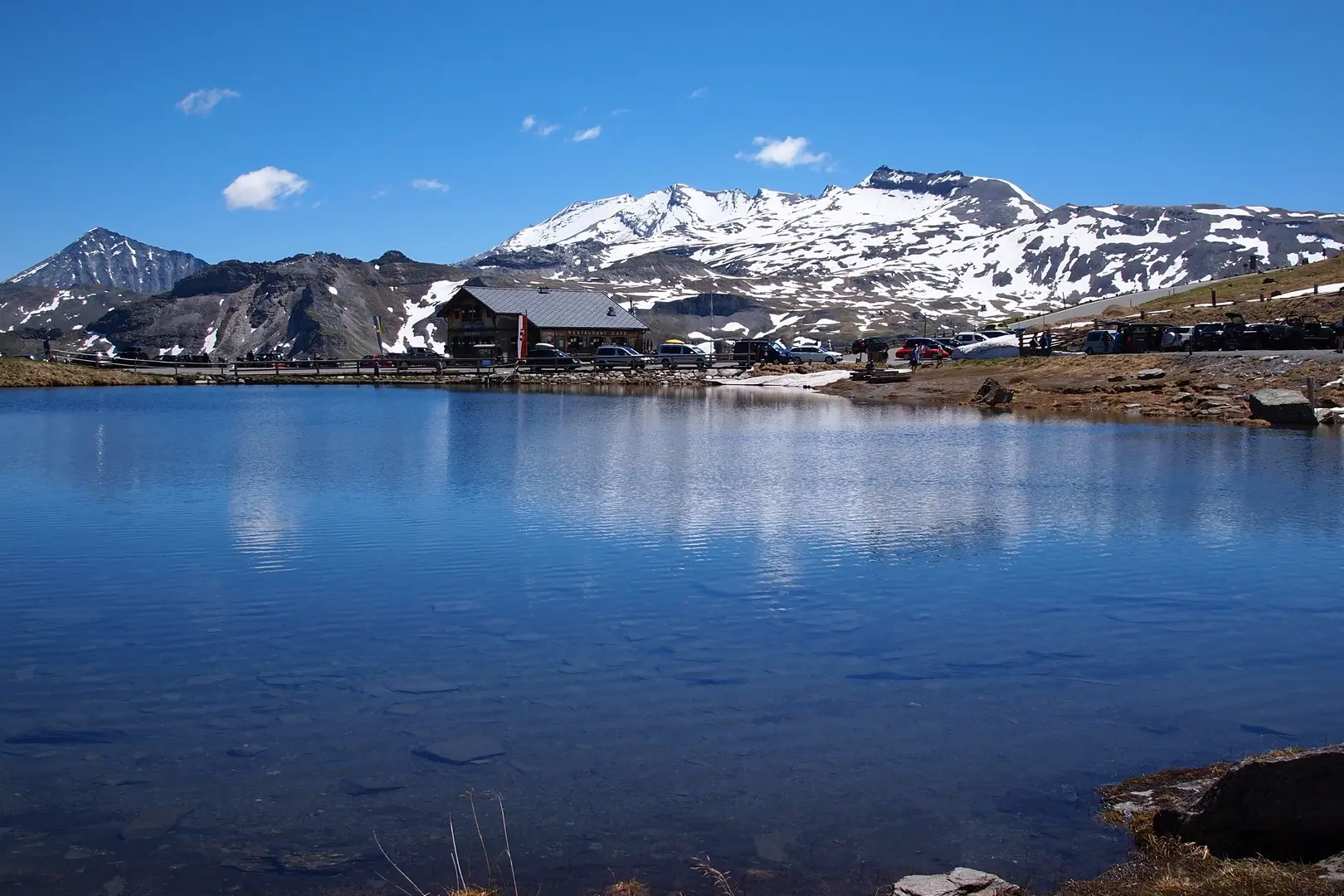Last Updated on 27/08/2024
The high alpine road Grossglockner Strasse is the most famous of such roads. It is really beautiful, but this means also a large number of not only cars, but also motorcycles, and what is especially unpleasant, bicycles.
The northern slope has more serpentine turns and more moving units. There are many popular tourist villages from the north and everyone returns there for the night. A southern descent with fewer turns, but sometimes with a steeper incline.
Dachstein, Tennengau, Pongau. Map of attractions
Werfen Ice cave
About castle Hohenwerfen
Liechtensteinklamm
Inn valley attractions on the map – from Innsbruck to Kufstein
What to do in Zell am See in summer
Krimml waterfalls hike
Hign alpine road Grossglockner Strasse – difficulties and timing
The road itself is not easy for the driver and the car, but the constantly meeting cyclists, who use their last strength with their tongues out, drive up a mountain a couple of meters from the edge of the road or rush down with furious eyes, make it even more difficult. The stones marking the edge of the road are placed there solely for moral support – they will not keep anyone from flying, let alone a bicycle – the distance between the stones is two meters.
On the way, there is even a commemorative plaque about an incident when a young woman could not cope with an oldtimer and sent several more cyclists into the abyss with her.
To reduce the agony of traffic, it is better to travel at less popular times: early in the morning or in the afternoon.
To save our not so young car, we chose to return home through the Felbertauern tunnel. This is not the shortest route (an hour and a half to Zell-am-See), but the quieter one.
Travel time excluding the way home: the first photo in front of the ticket office was taken at 11.02, the last, in Heiligenblut, at 16.25. We did not wander, did not climb the cable car, did not go down to the glacier. We spended extra time only on food (40 minutes) and walked along the river (no more than half an hour) and on the observation trail by the glacier (another half hour). Also 3.40 hours pure Drive-and-Photo time.
Public transport
For horseless travelers, there is the Grossglocknerbus (link), which will take you along the route for 30 euros.
The bus goes from Hinterglemm, in Zell am See it arrives at 9.00, in Schüttdorf at 9.10, returns closer to 17 hours. You need to book the day before the trip.
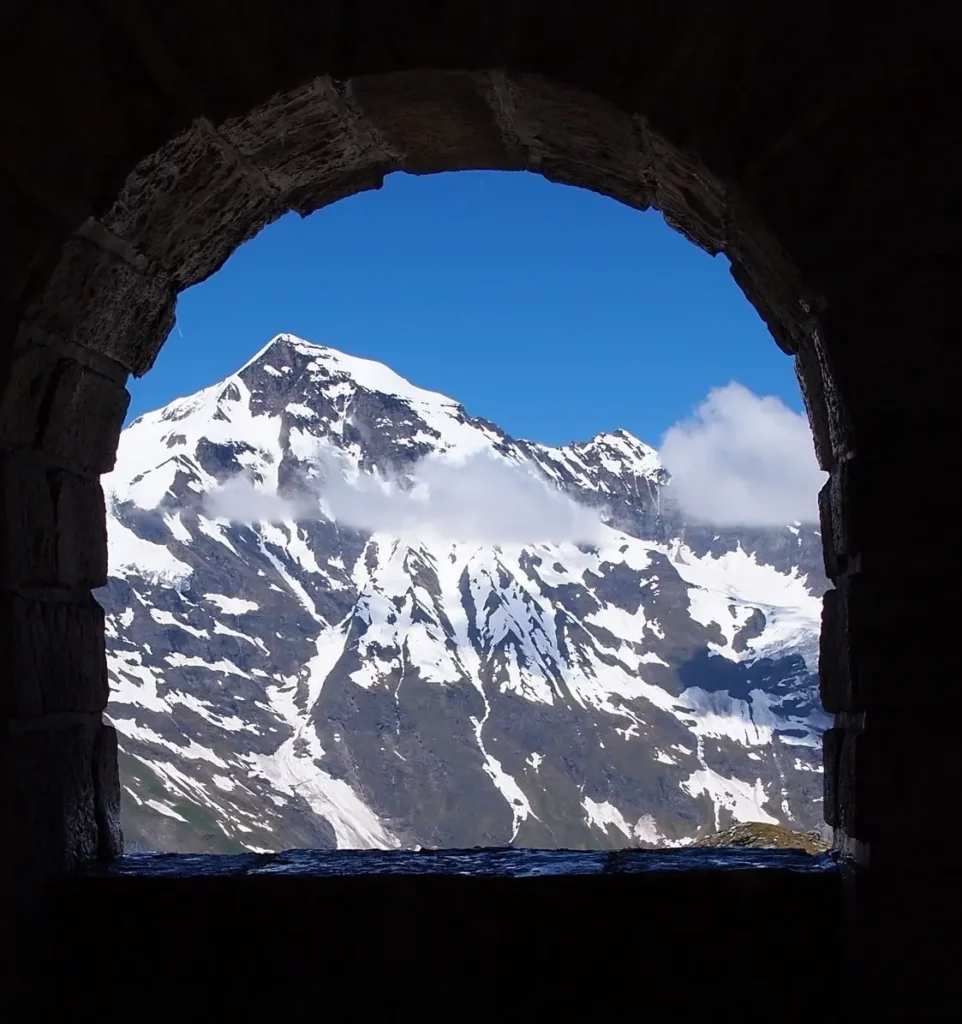
North slope. Stage 1
If you go in cloudy weather, the mountains seem more mysterious: a cloud here – a cloud there, different shapes, one can think, that there are many different views. In clear weather, everything is easier. One view to the north, until the first high point of Fuscher Törl is passed. Tthen we admire the middle ridge to the tunnel and the highest point of the Hochtor pass, and then enjoy the southern slopes. When half of the descent to the south is overcome, a circle appears: you can go to the Grossglockner glacier (this is a dead-end road and again you need to climb almost to the same height from which you descended) or finally descend and go towards Linz.
The road begins at the village of Bruck, next to Zell am See.
We go from there …
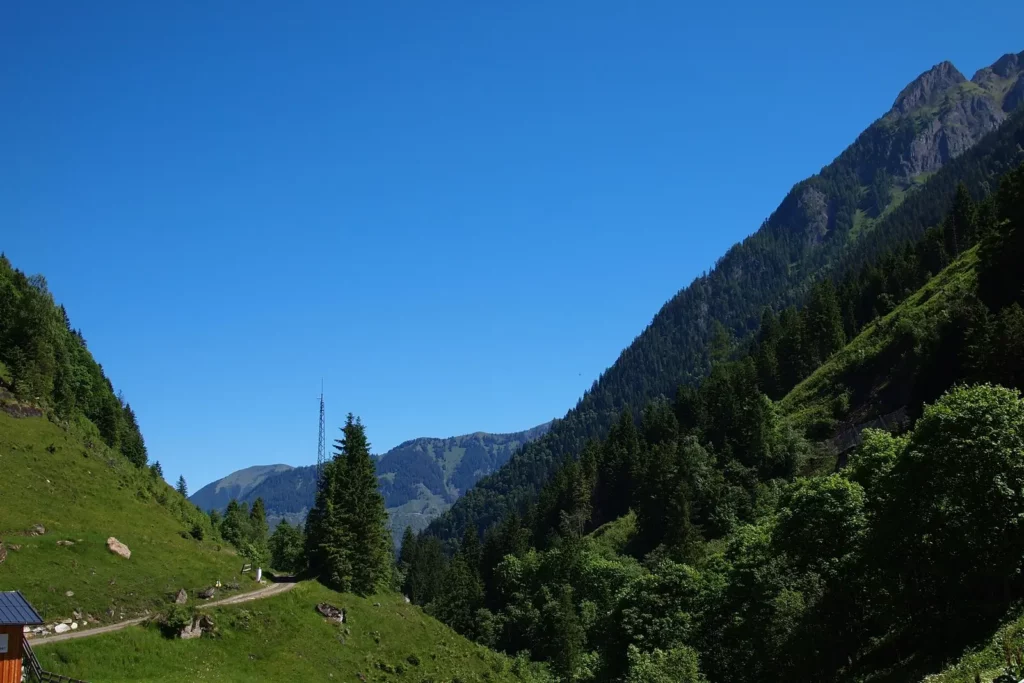
… thereto
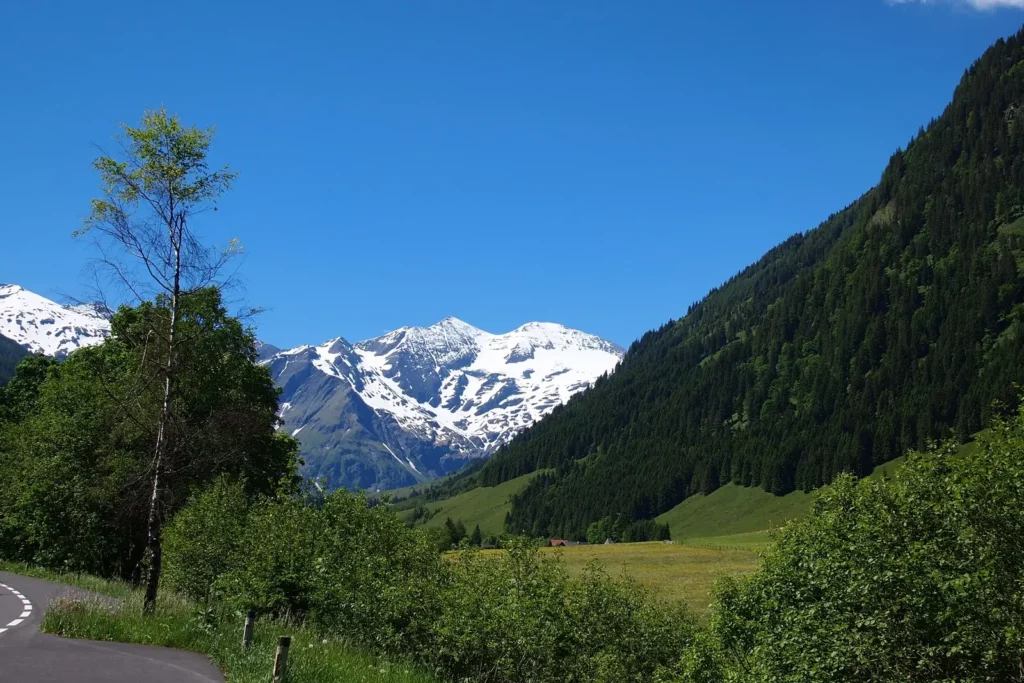
Gradually climbing, do not forget to stop in the large parking lot shortly before the ticket offices to take pictures of the Walcher Falls. This is the highest Austrian waterfall (520 meters). There is a hiking trail from the village of Ferleiten, but this is a walk for a couple of hours.
Waterfall
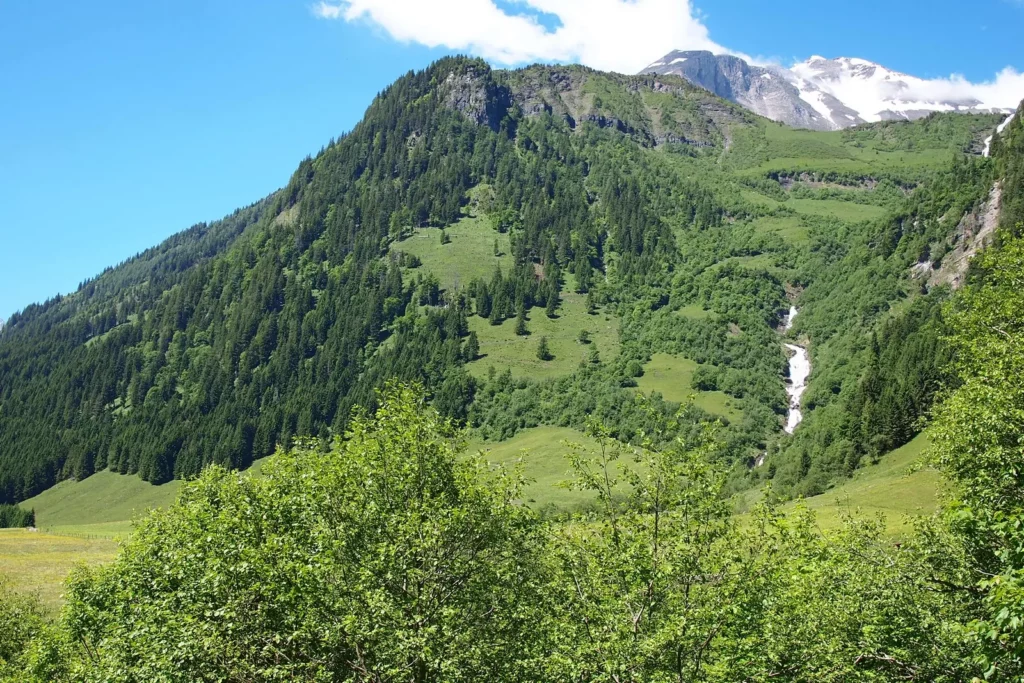
Reservoir below
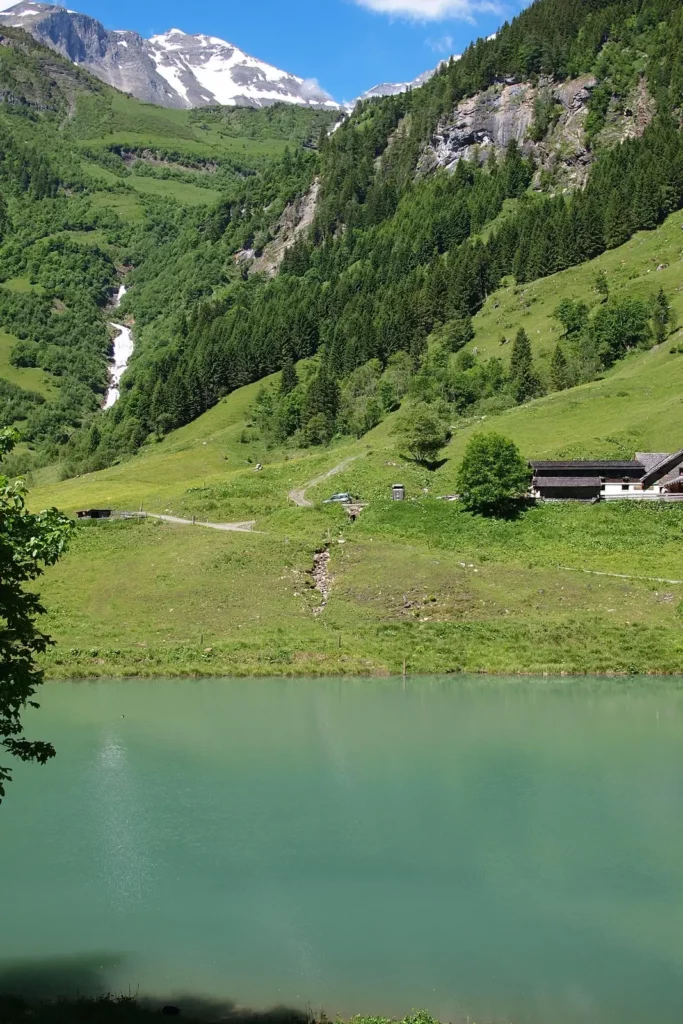
Next attraction is the Ferleiten zoo and playground, which is located right next to the ticket office – you have to take the exit to the village. The zoo is quite standard: bears, mountain sheep and other so to speak “local” animals.
Amusement park is pure extortion. The entrance there is “free”, but you will pay separately for each attraction. We have already been to a similar place on Lake Constance. It turns out a decent amount. Therefore, you need to either immediately negotiate with the children how much they can spend, or avoid the place completely.

We begin to climb. The first third of the journey is the most tedious. It doesn’t make much sense to stop in small parking lots to take pictures. The view from large parking lots will be the same. The first compulsory stop is marked on the flyer with map given at the ticket office as number three.

There is a small museum, a botanical trail with flowers. Since it was still early spring at this height (coltsfoot is in bloom), there were few flowers.
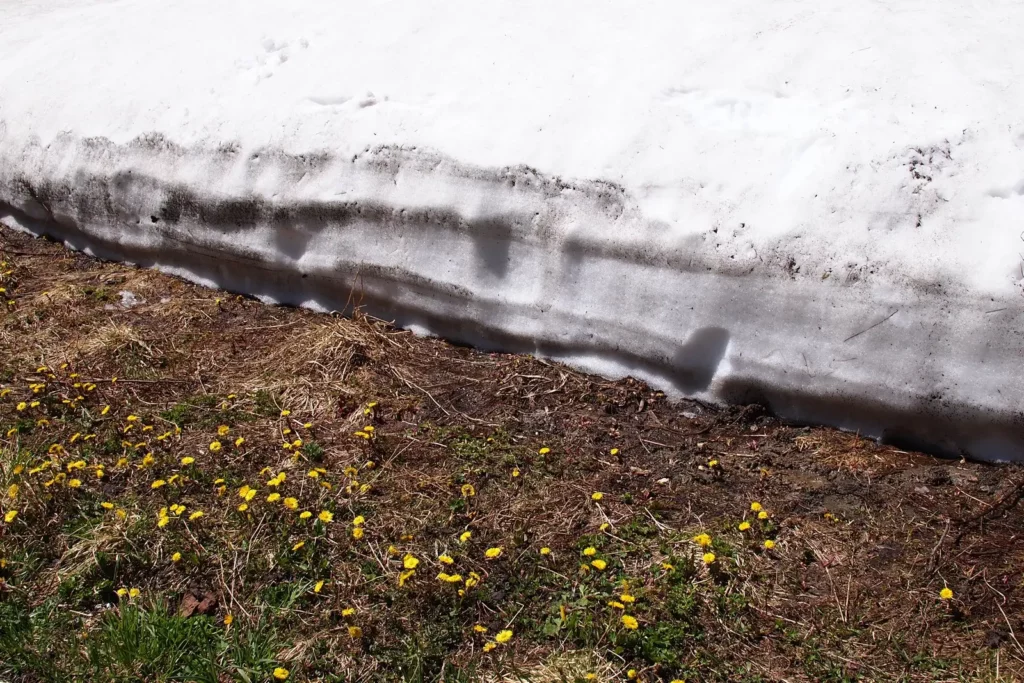
primrose
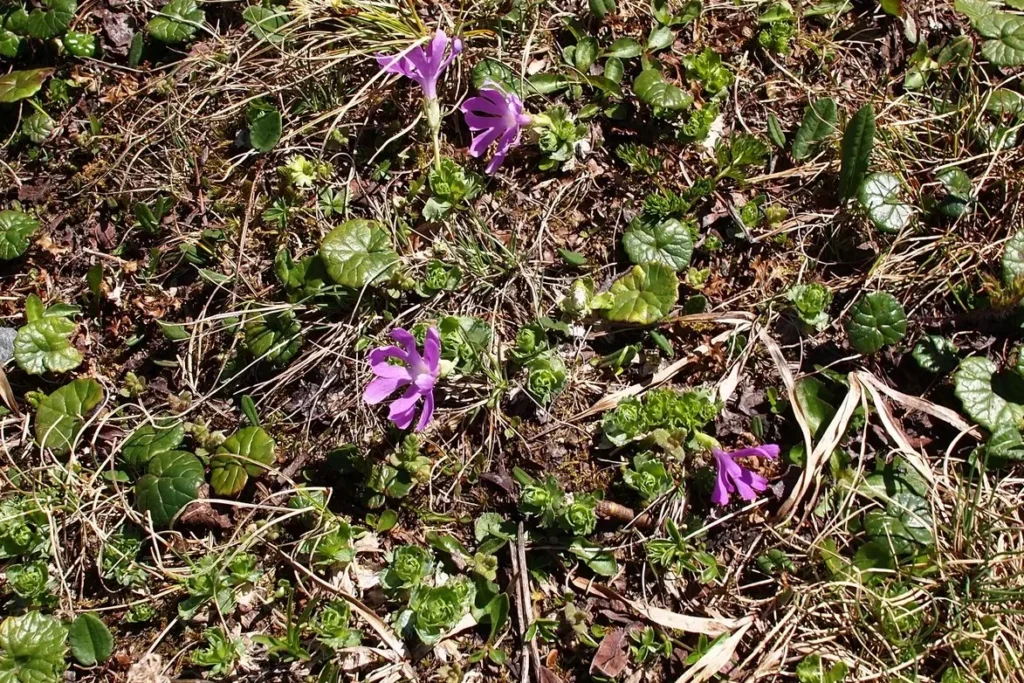
Alpine pasqueflower (Kuhschelle)
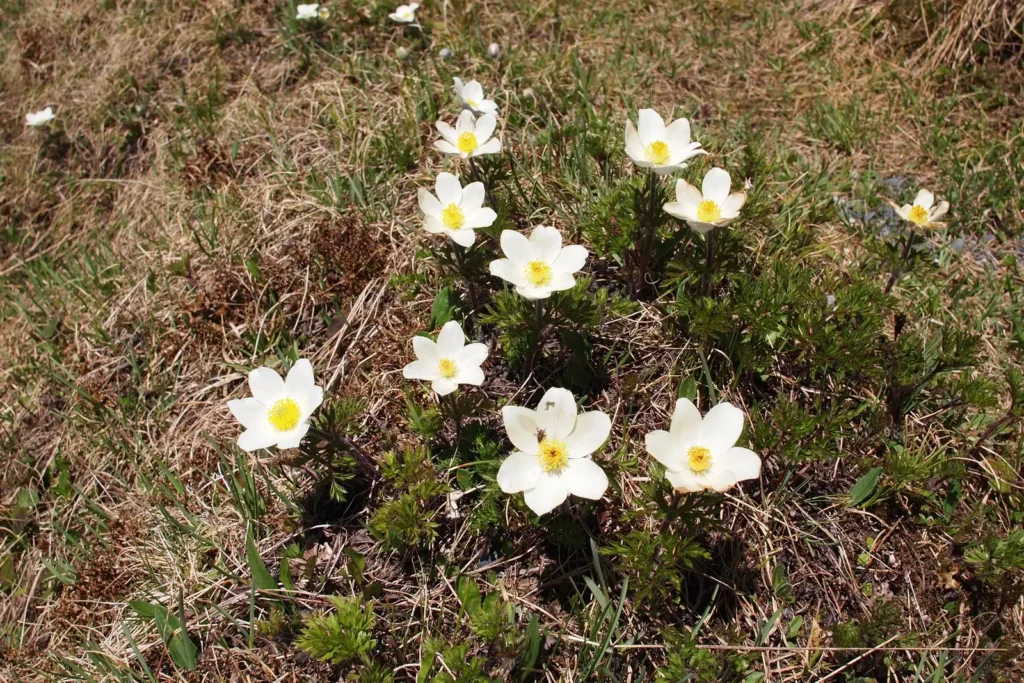
There is still to climb to the first pass
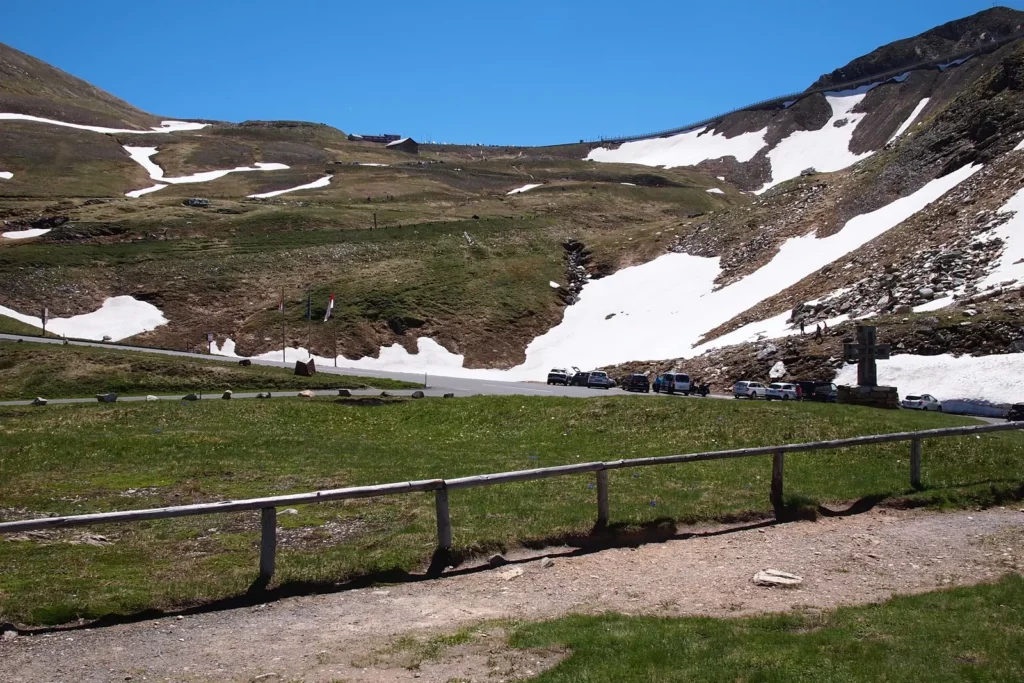
And from there we climbed.
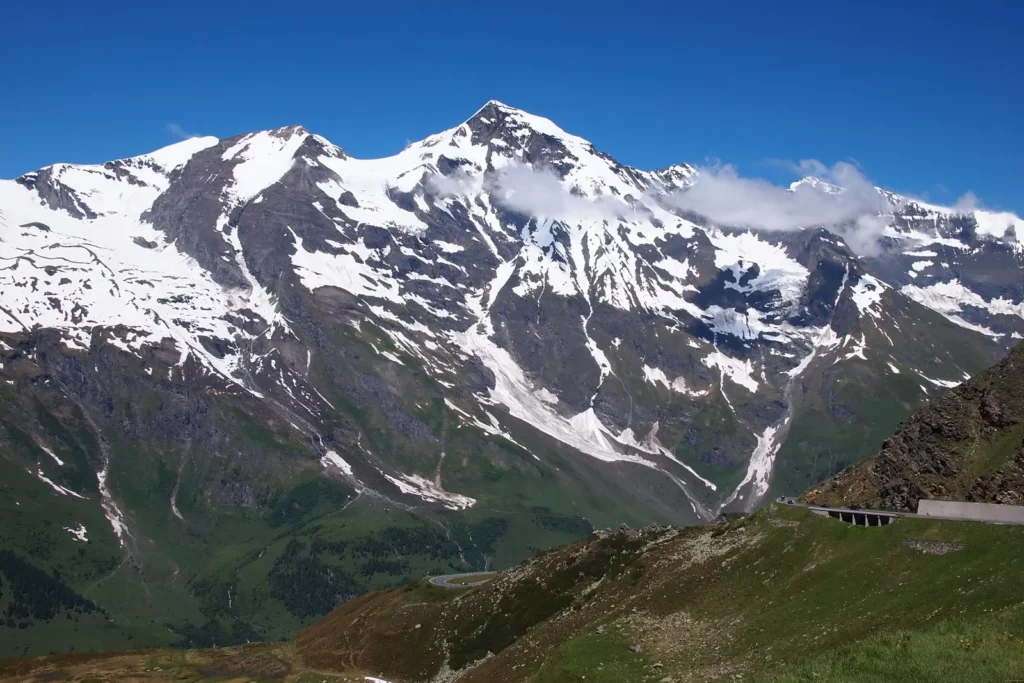
The next parking was supposed to climb a rather large mountain Edelweiss (point 4), we missed it.
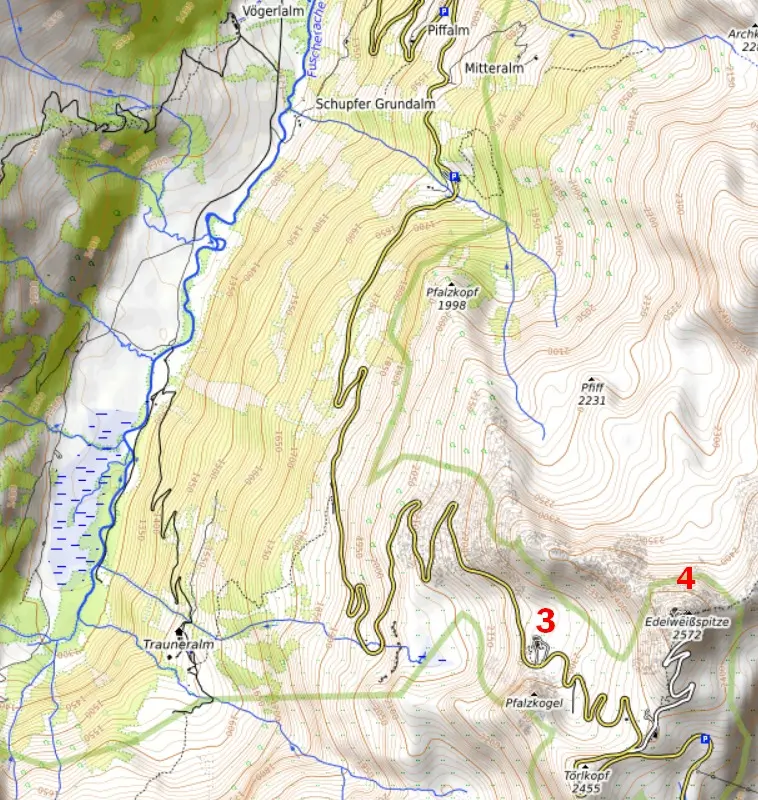
Point 5, Fuscher Törl – the first pass, then the road goes down for a while. From here there will be the same view of the northern slopes, but also a new view of the next section of the road.
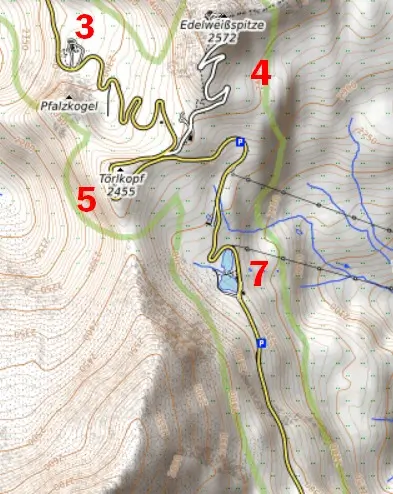
Houses at the bottom left – point 3, the mountain on the right – Mount Edelweiss with an observation deck. You can assess whether you want to climb there.
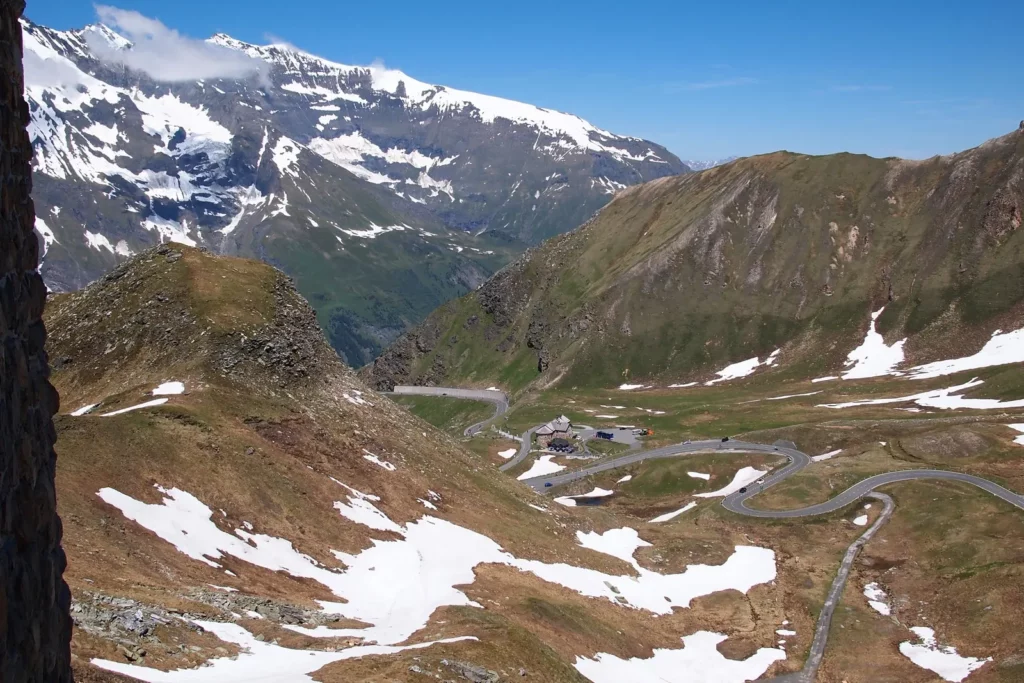
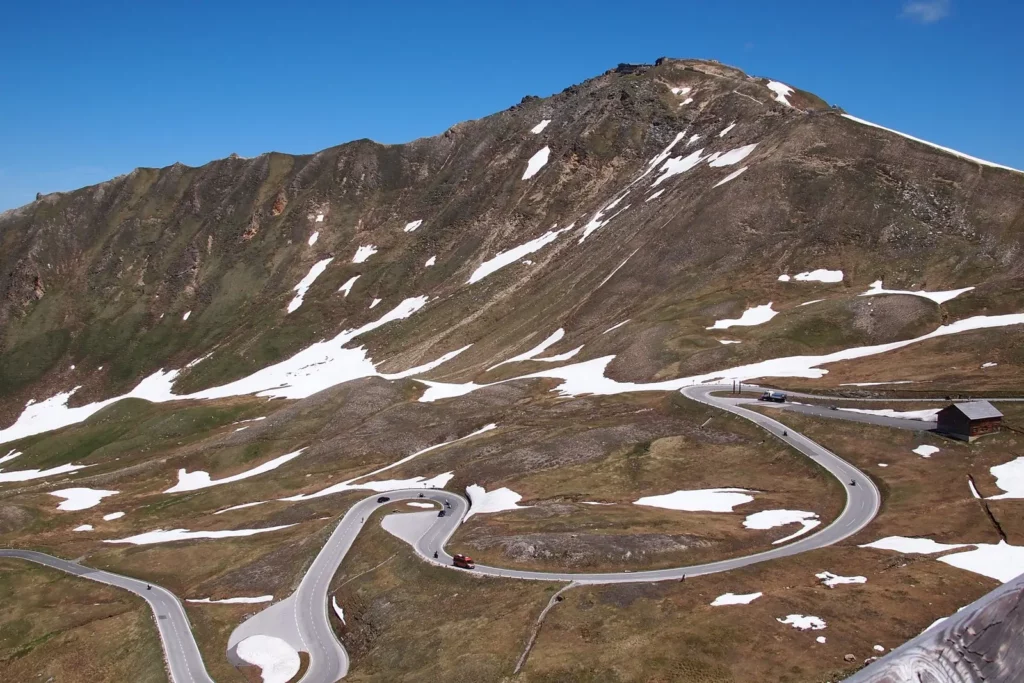
Stage 2
And this is already the second third of the way. Below is Lake Fuscher Lacke, point 7.

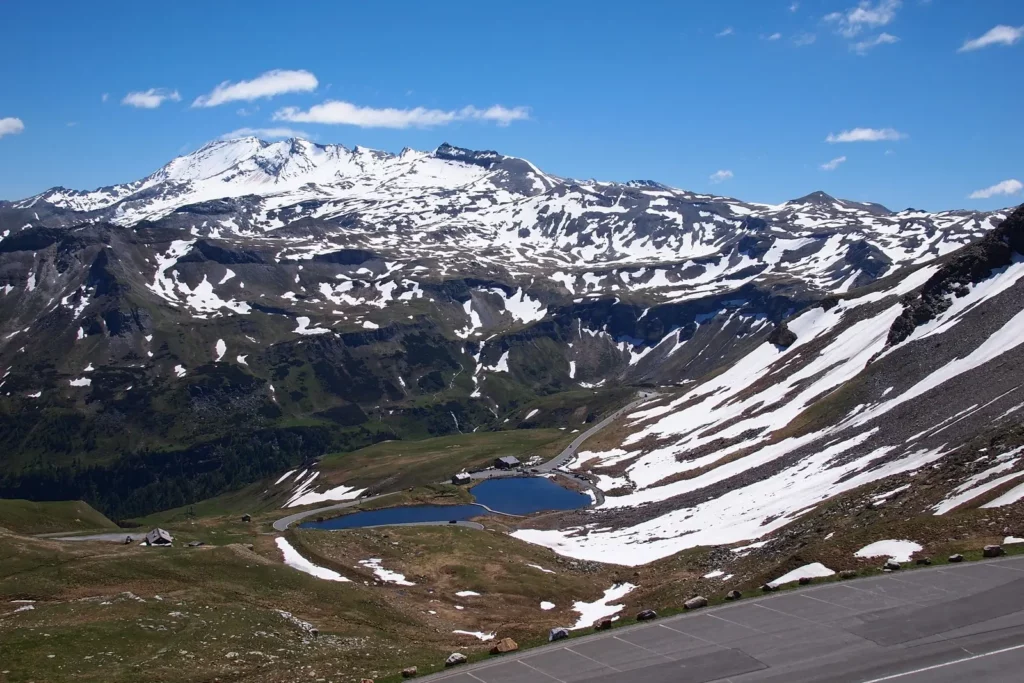

Mount Edelweiss in the center
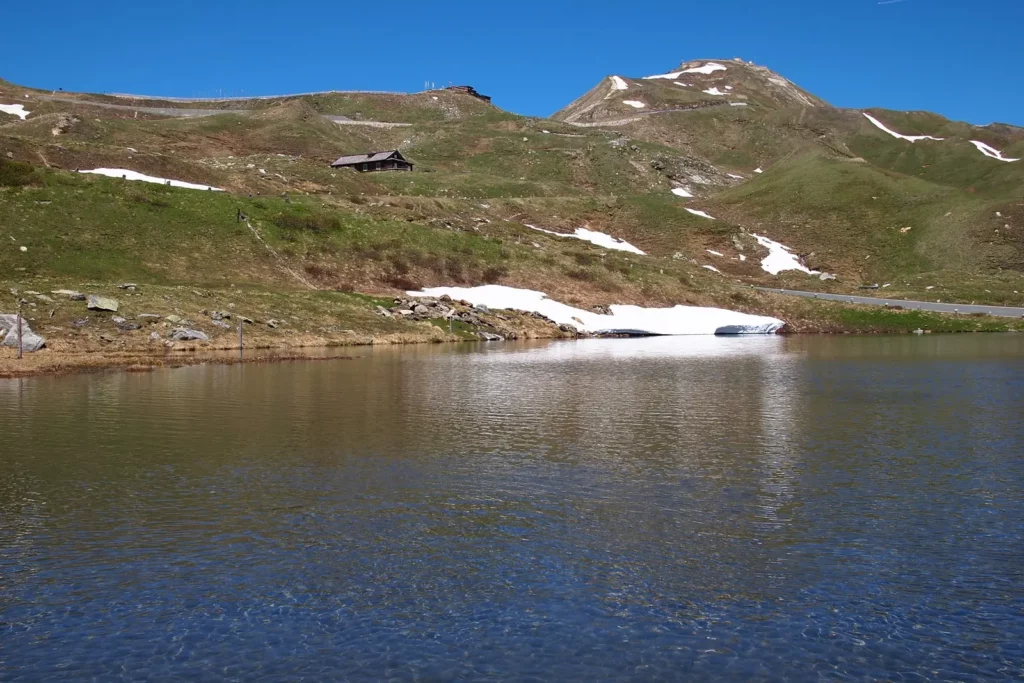

Again we climb a couple of hundred meters to the main Hochtor pass, point 9 (right after the second tunnel).
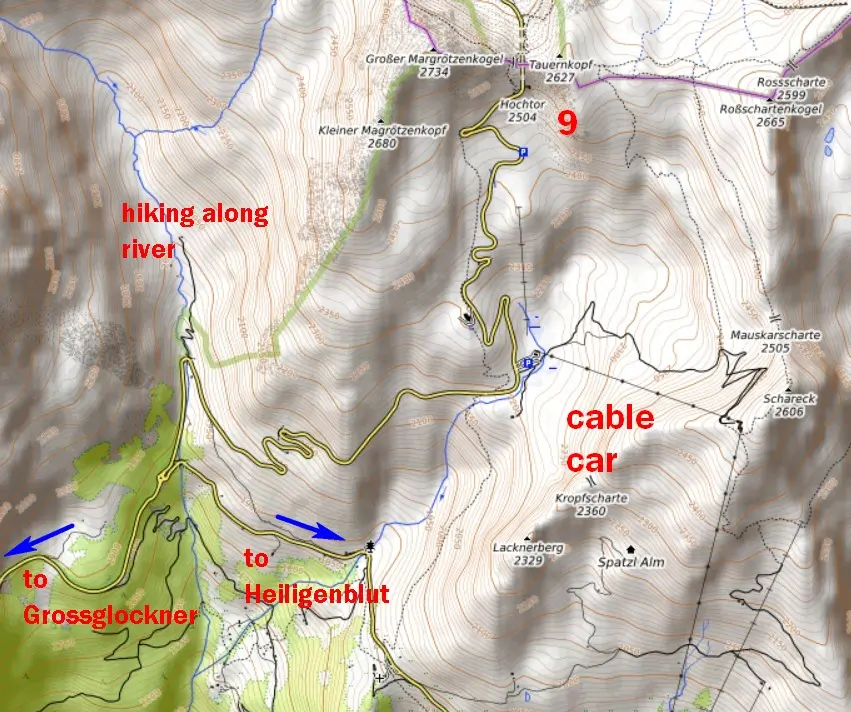
Southern slopes. Stage 3
We are already looking at the southern slopes.
As far as I could see, the Panoramabahn cable car climbs this mountain. It works regularly during the season, when we were there, she did not work yet.
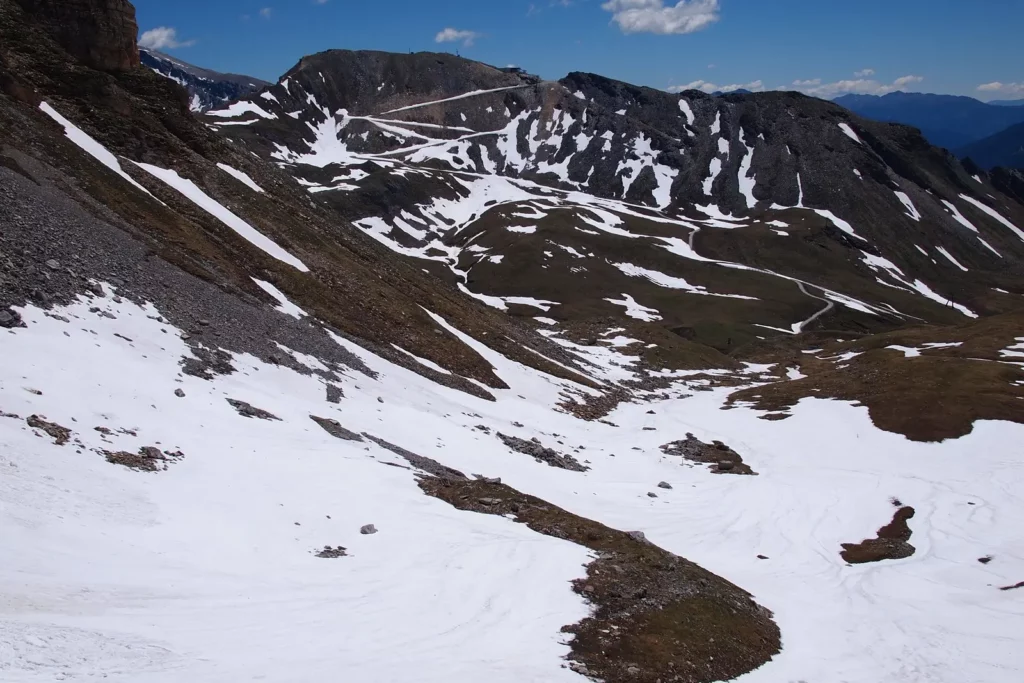
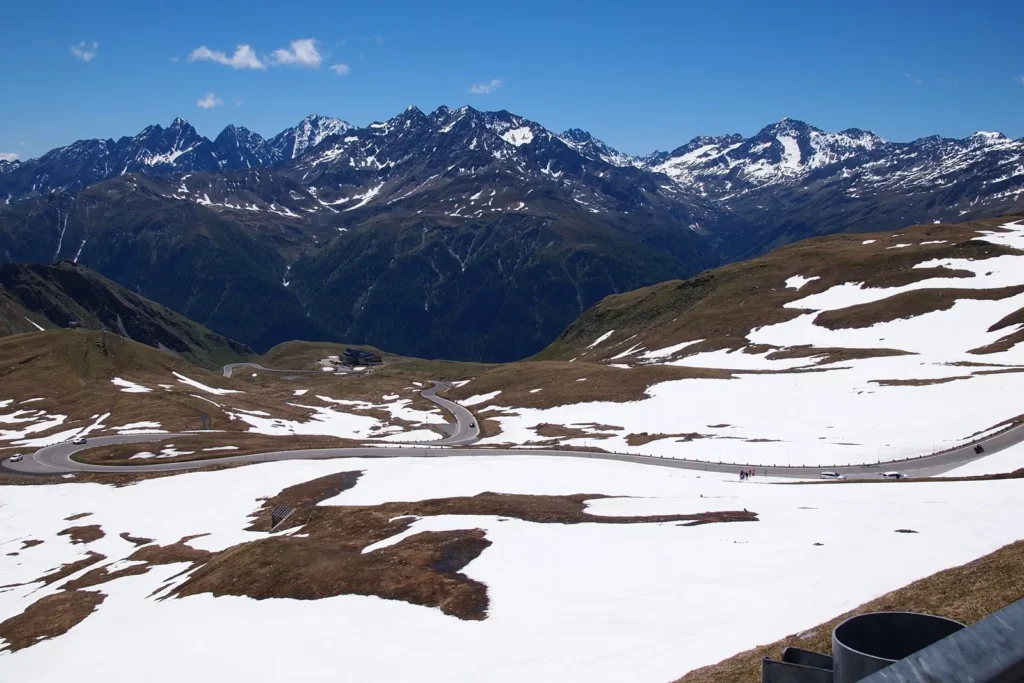
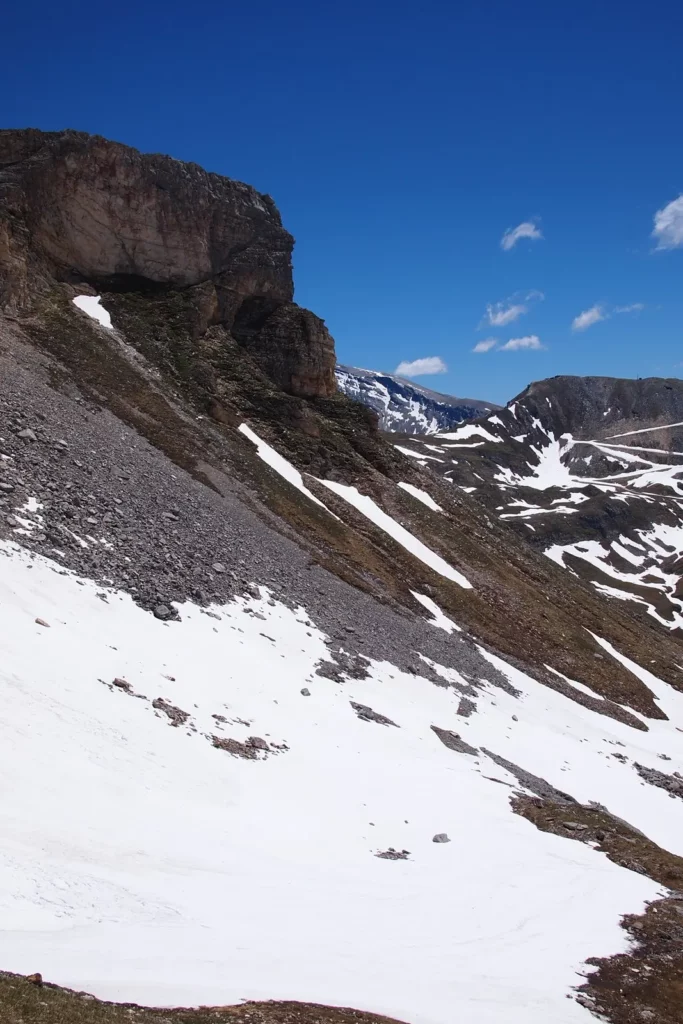
We go down a little lower.

Behind this mountain Grossglockner
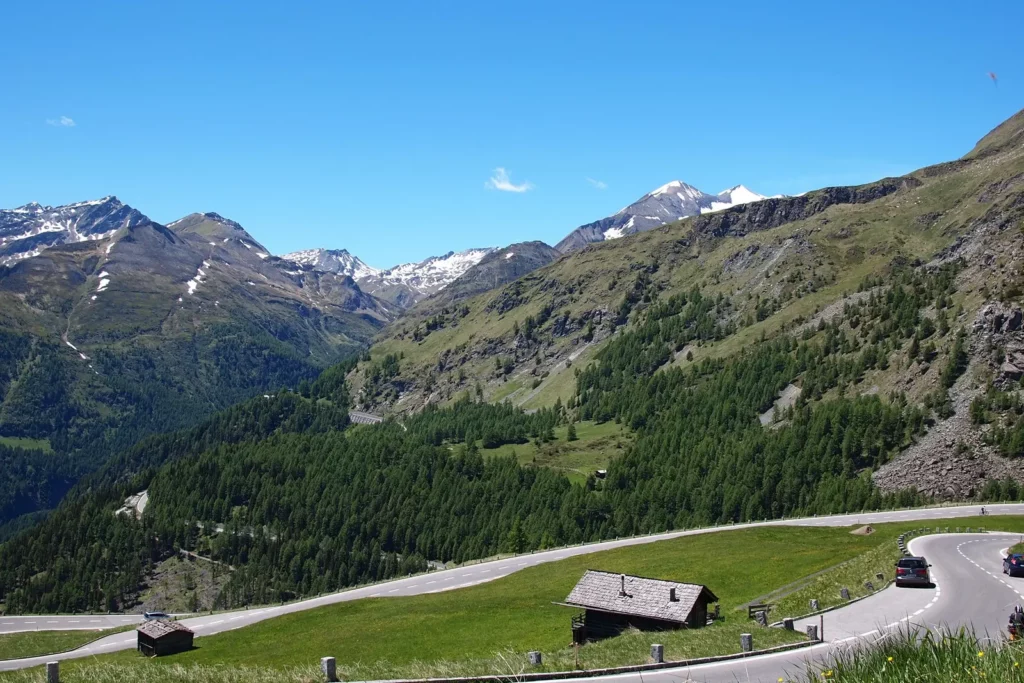
At the last bend before the circle there is a parking lot, from which you can go up along the mountain stream.
A fox was found in the parking lot. The animal was clearly unhealthy, so we chose not to approach. After all, it is foxes that are famous for spreading rabies. I did not find information on the tame foxes on the Grossglockner on the network.
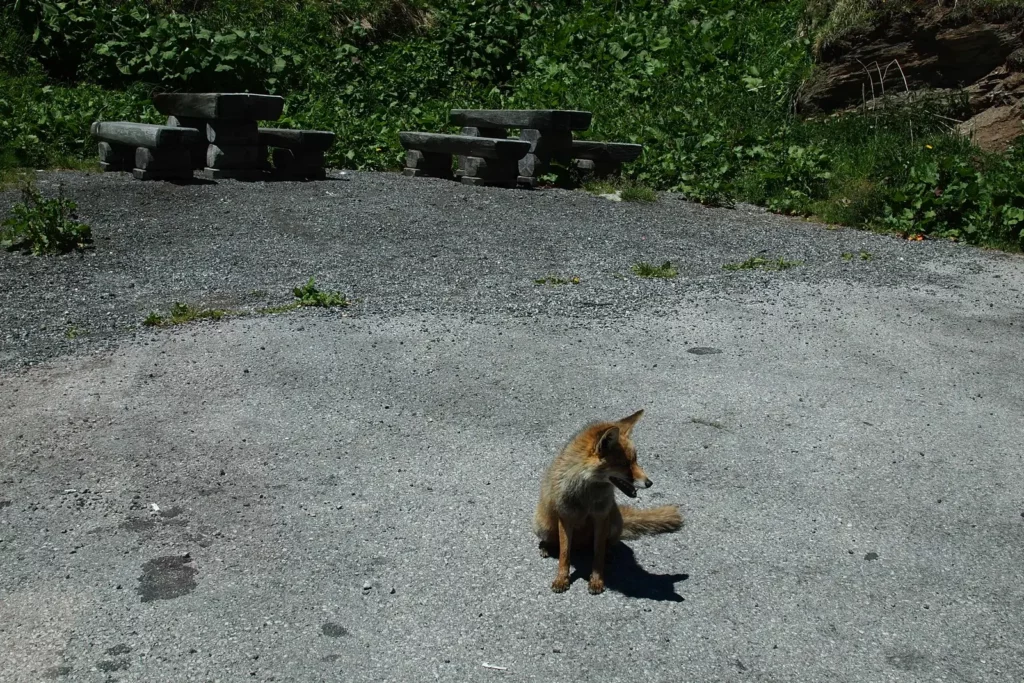
At this lower level, glove flowers bloom.
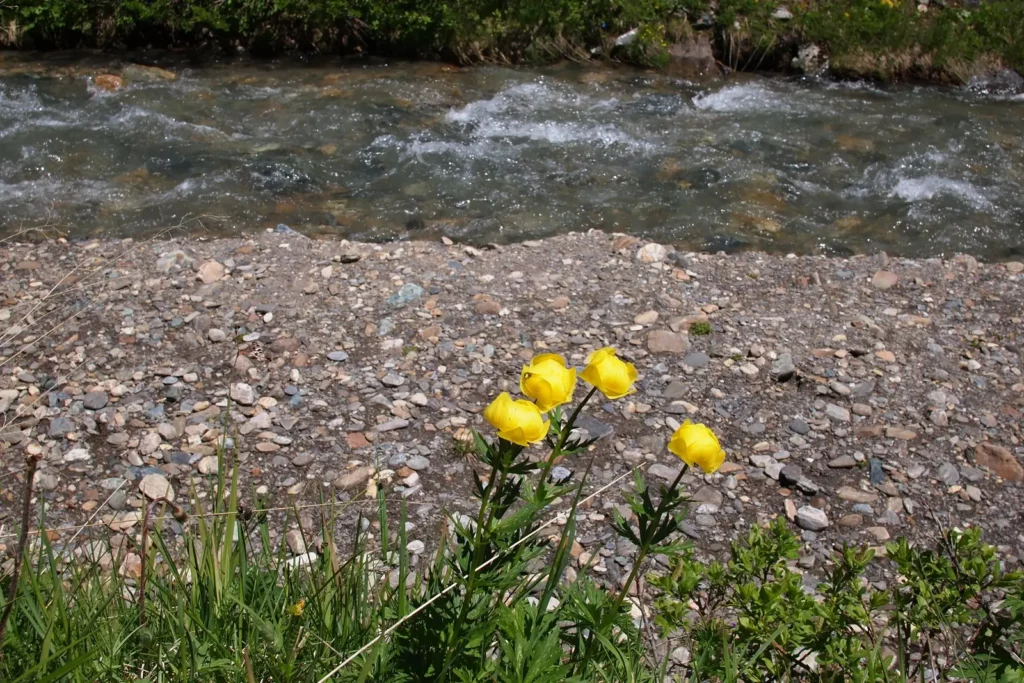
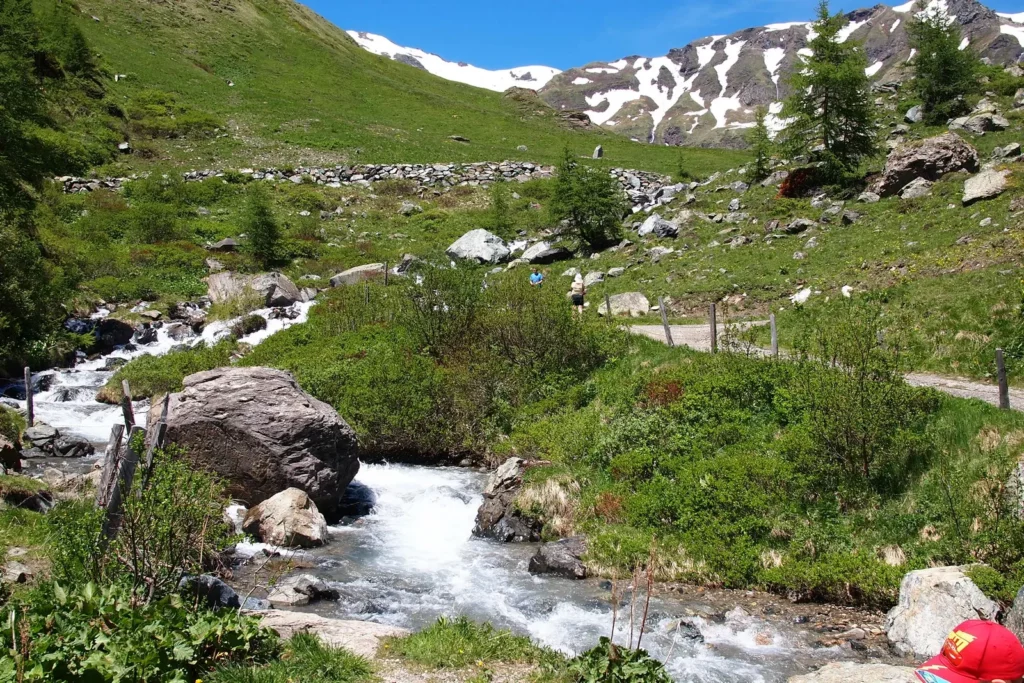
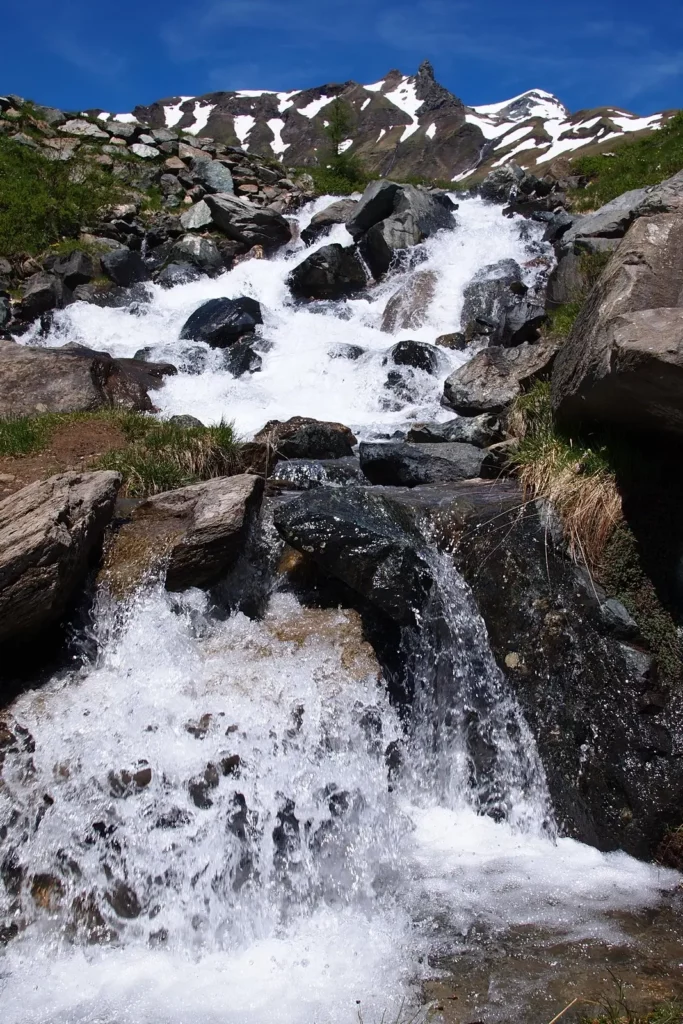
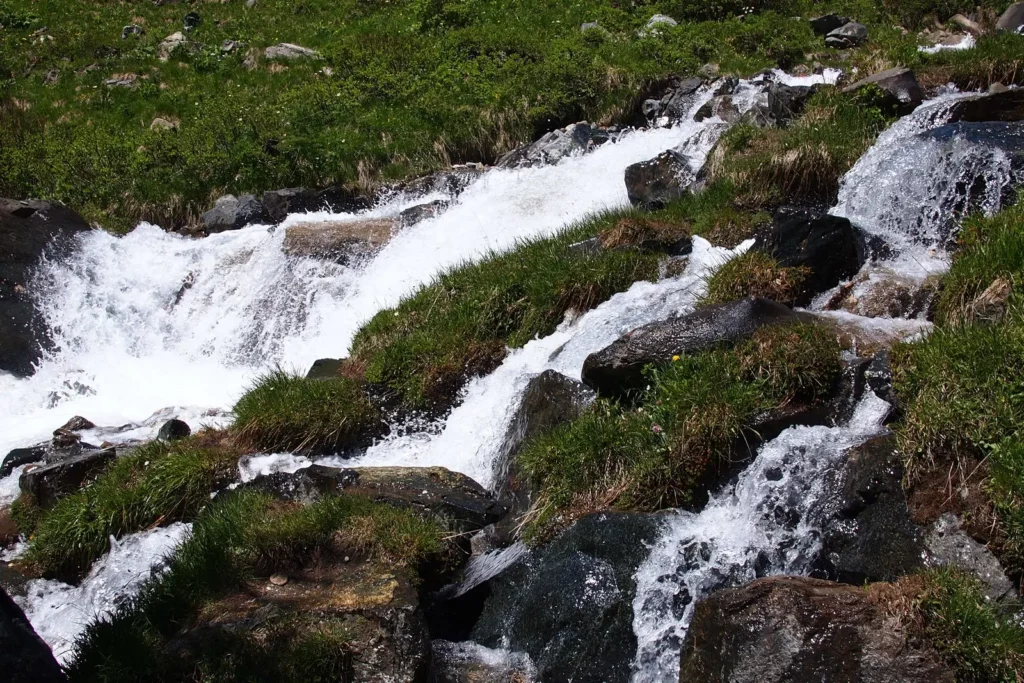
This is the exit road. Below is Heiligenblut. If you zoom in, you can see the church, which adorns many postcards.

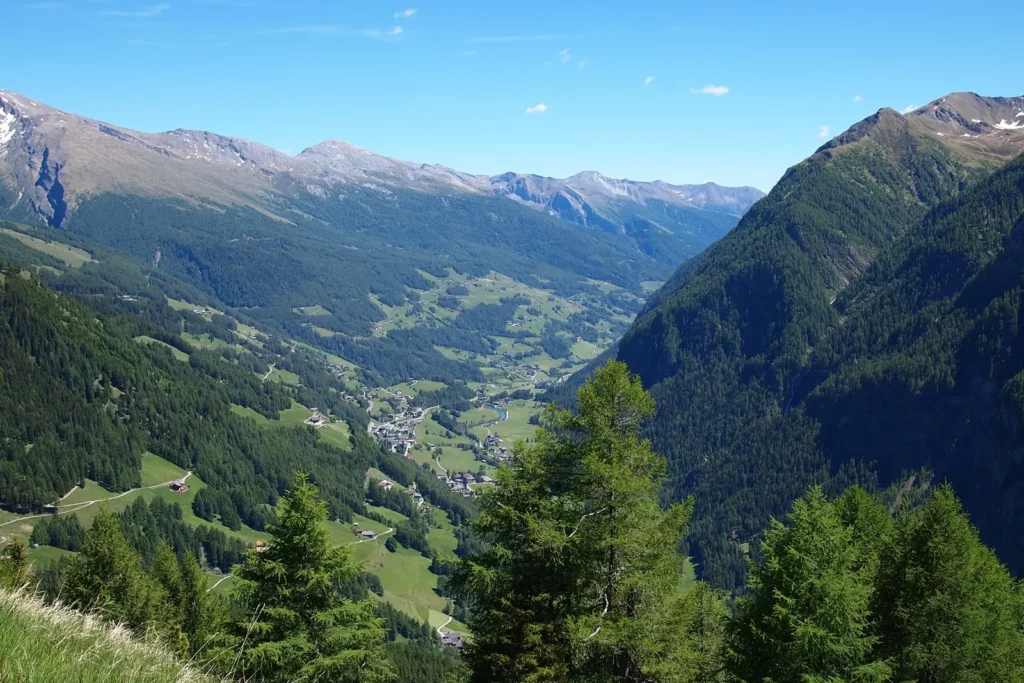
Grossglockner Glacier
But we will turn first to the Grossglockner Glacier. On the way, there will be a stop at Schöneck – a restaurant with a playground.
Artificial waterfall on the way. Redirecting the flow makes it possible to generate electricity.
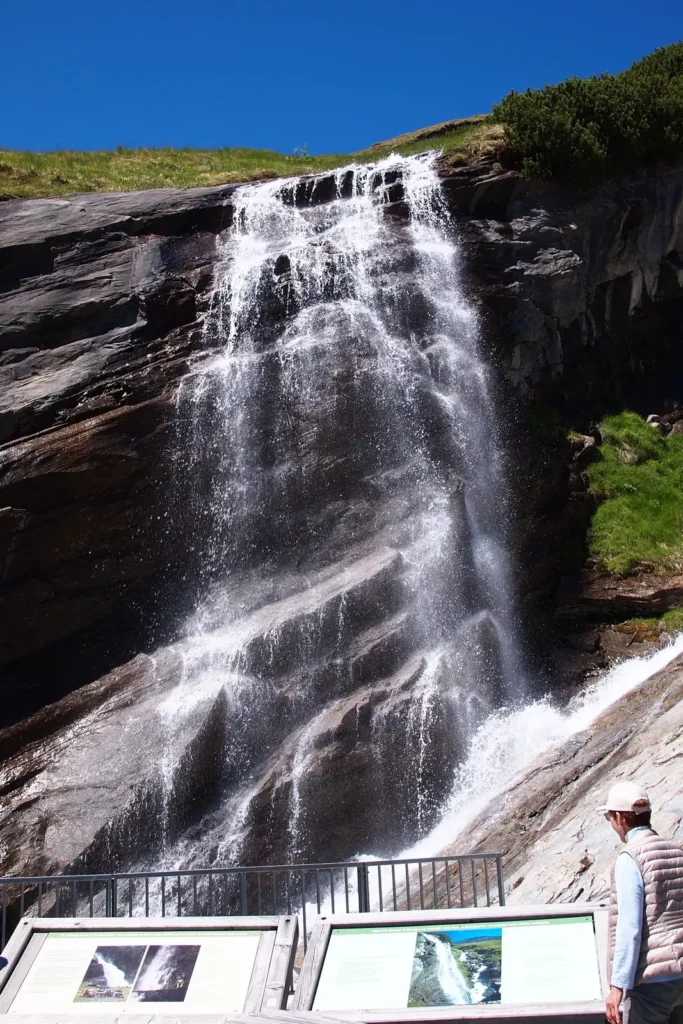
Another stop is worth making before the ascent to take pictures of the reservoirs.
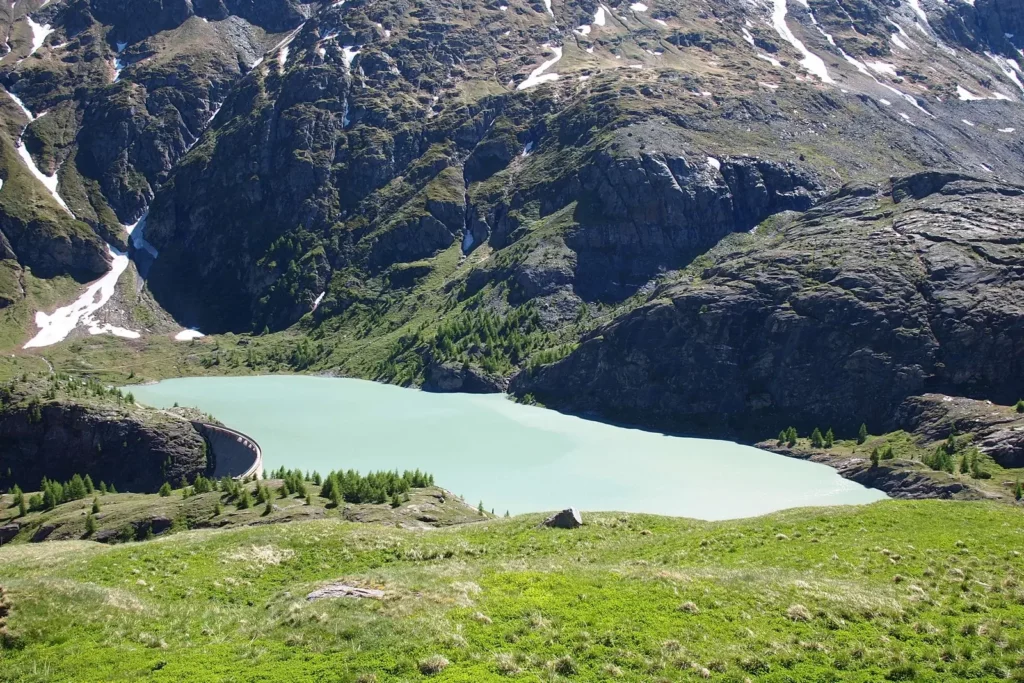
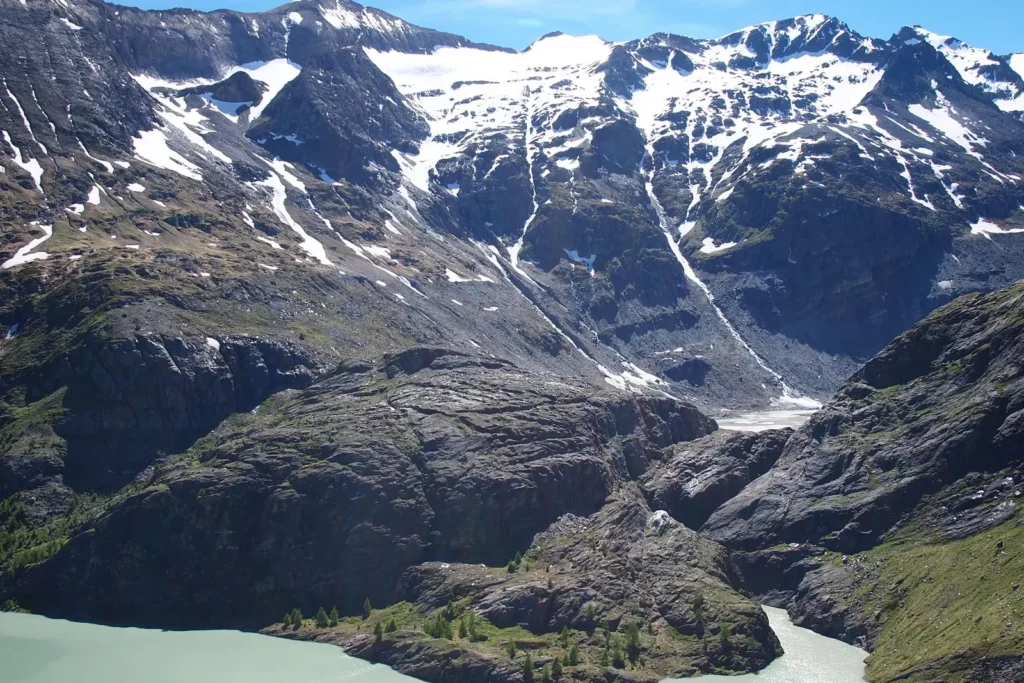
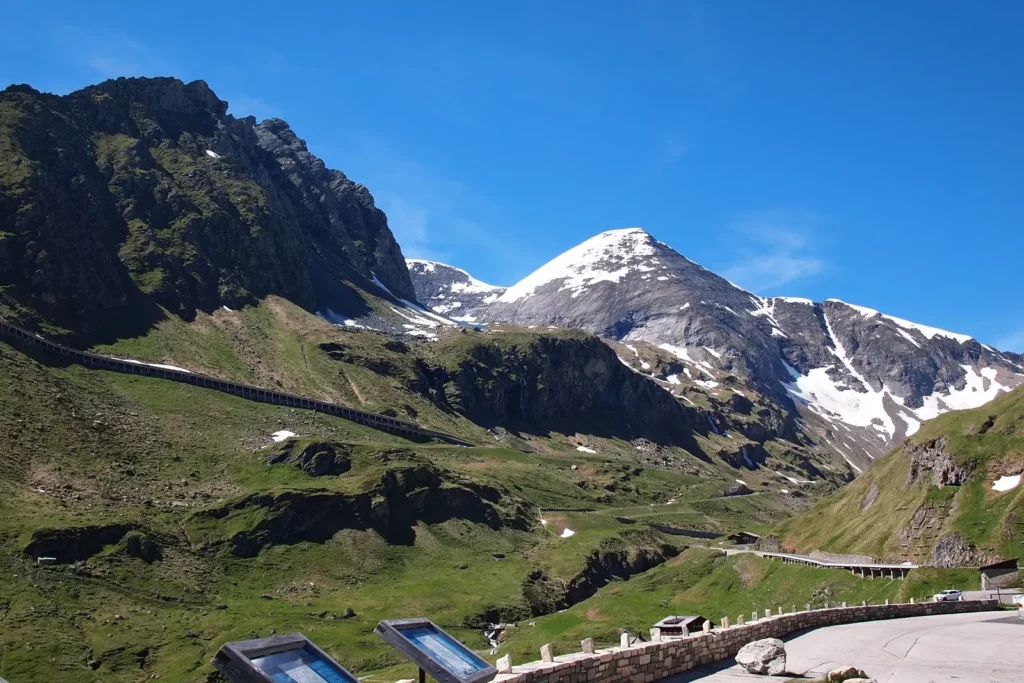
Last spurt
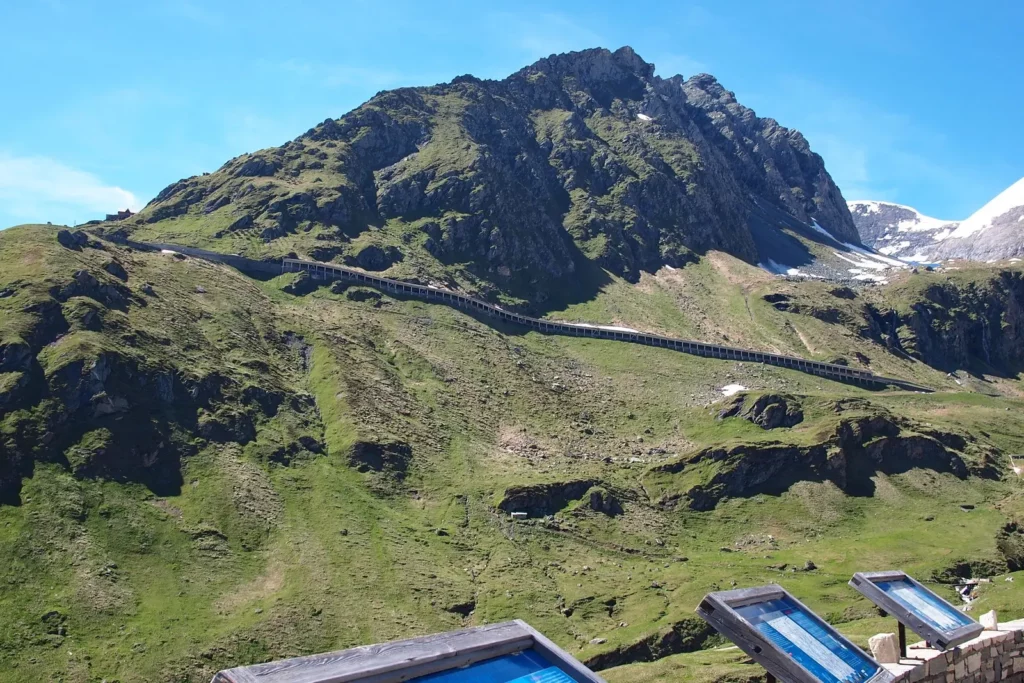
At the very top there are several parking lots, and at the very end there is a covered multi-storey free parking.
The glacier has receded significantly in recent years. Down you can go down the funicular.
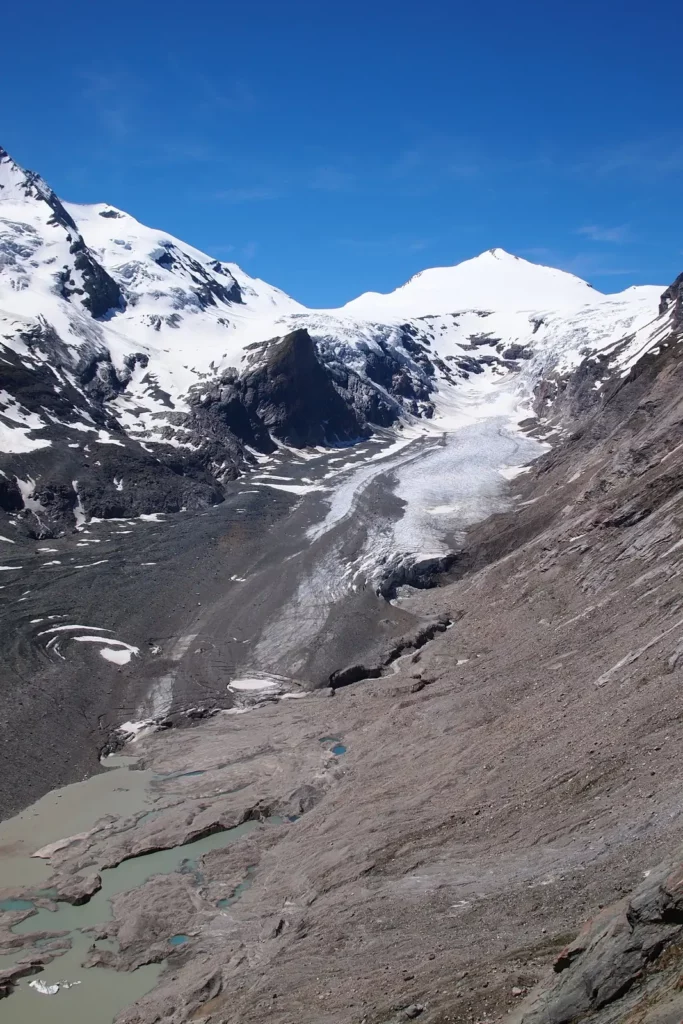
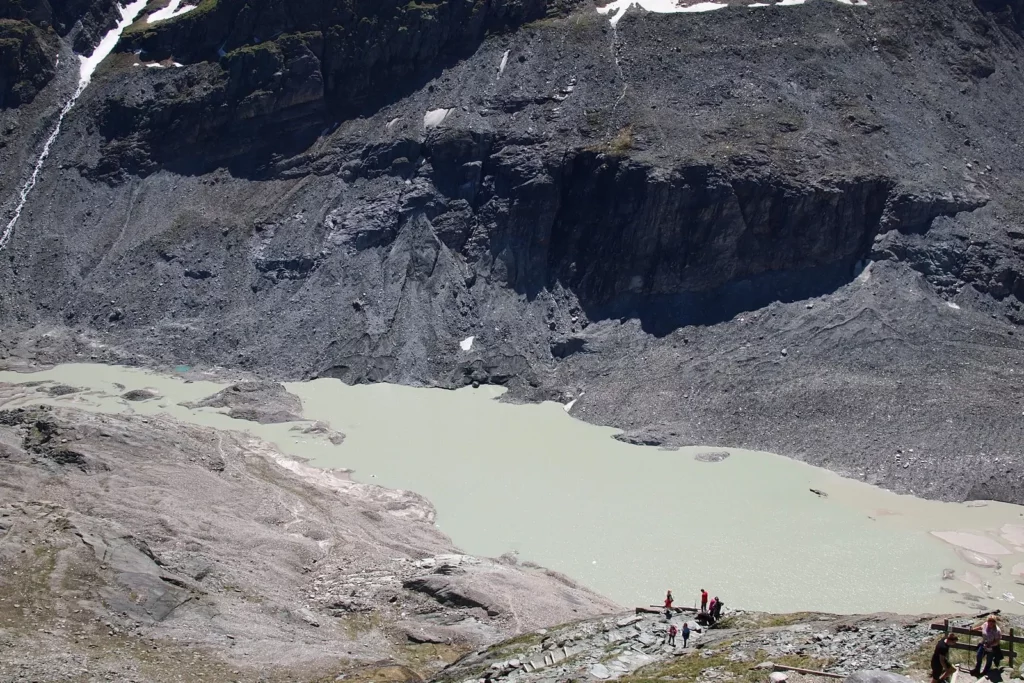

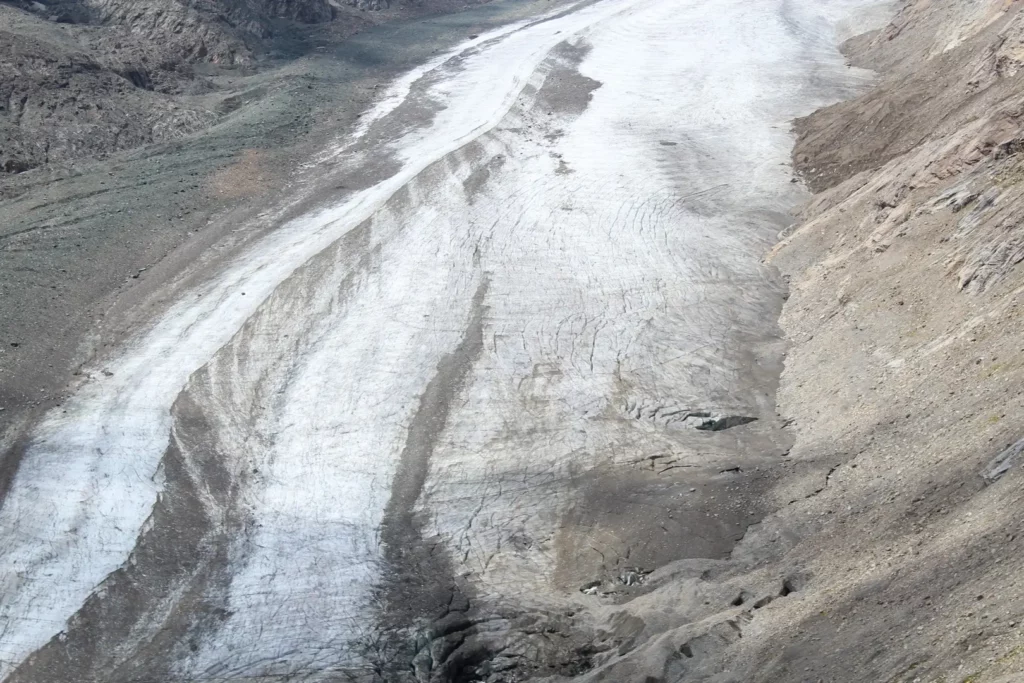
From the top floor of the parking lot, there is a sightseeing path where you can see marmots.

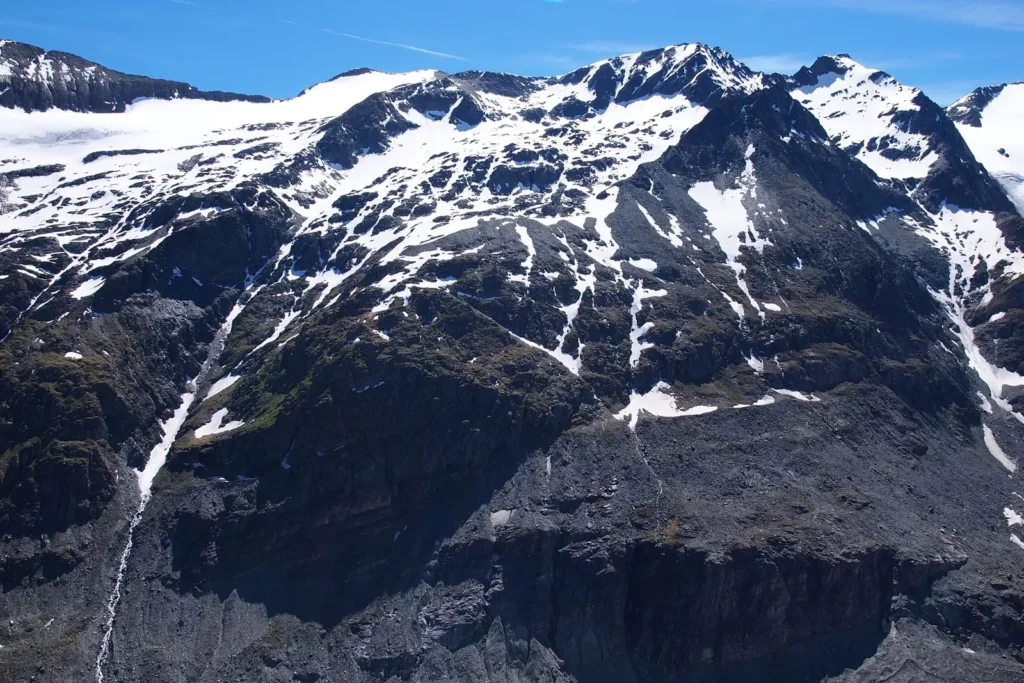
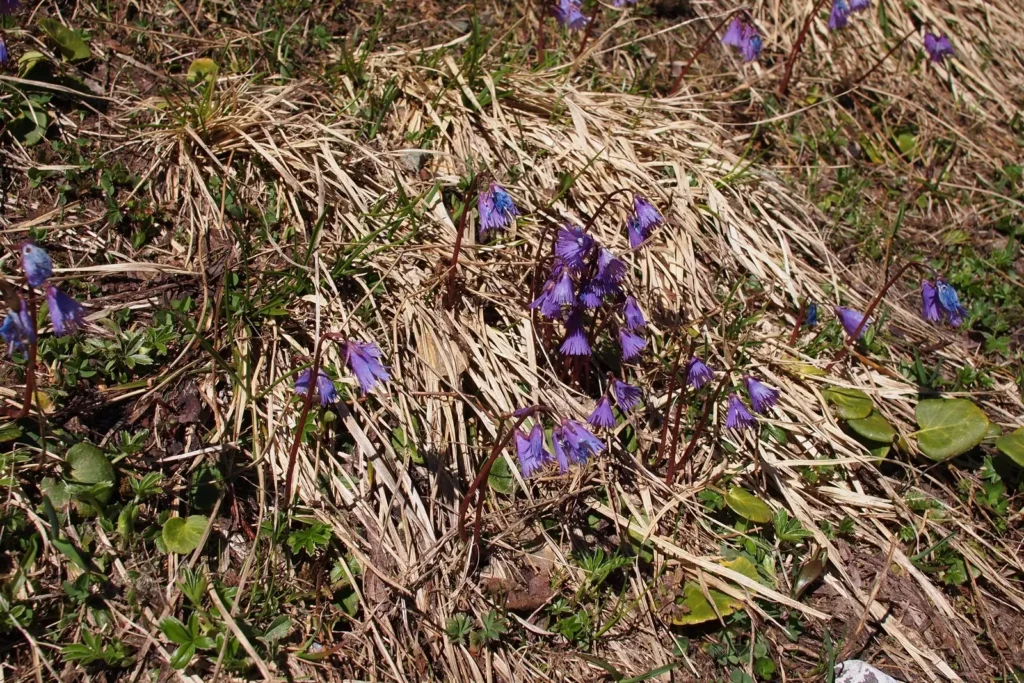
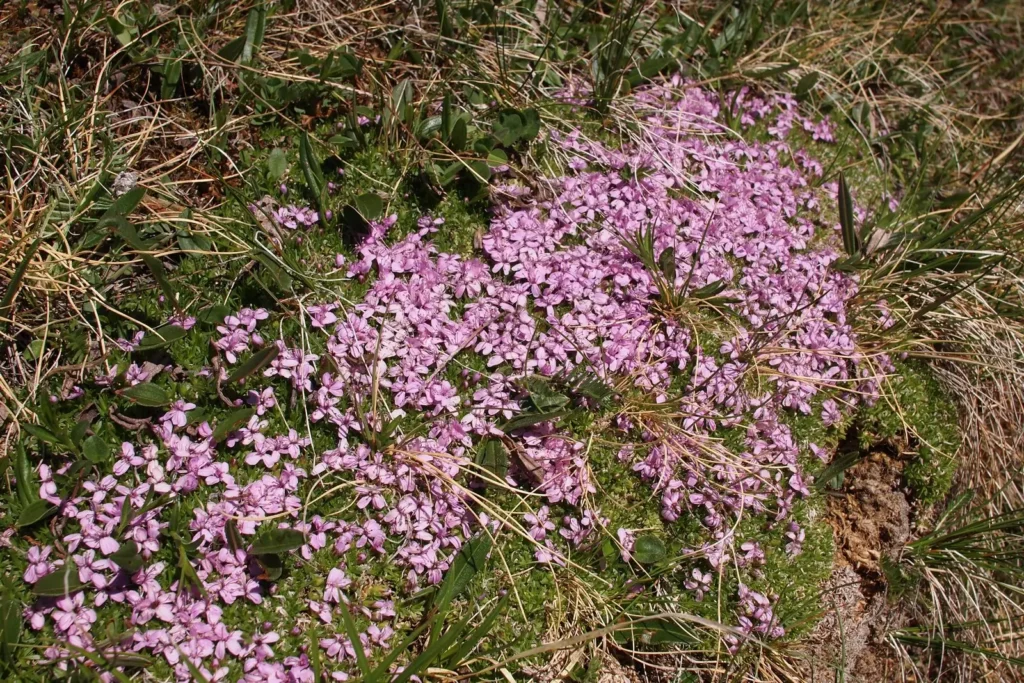
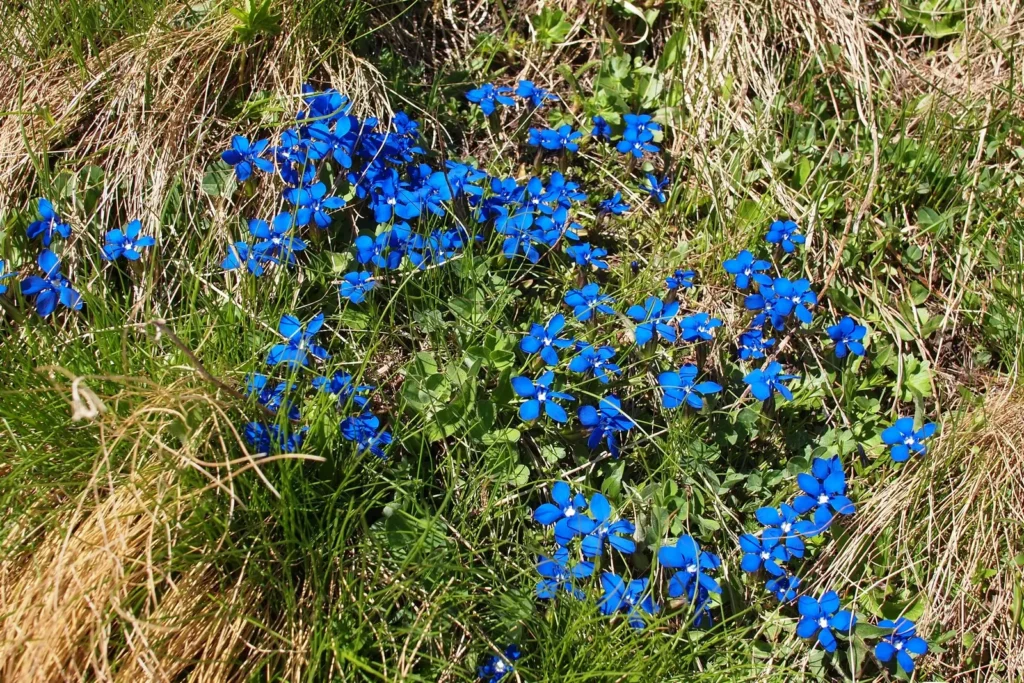
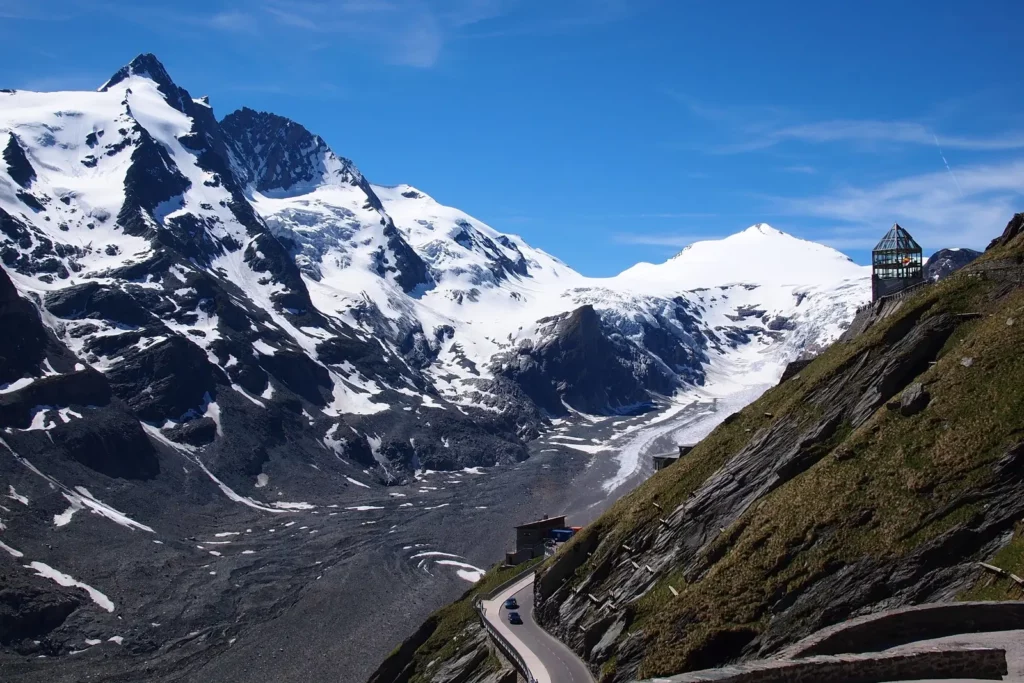
Follow me
We saw the marmots, but in the distance – in the photographs they are too small. Therefore, I give an autumn photograph.
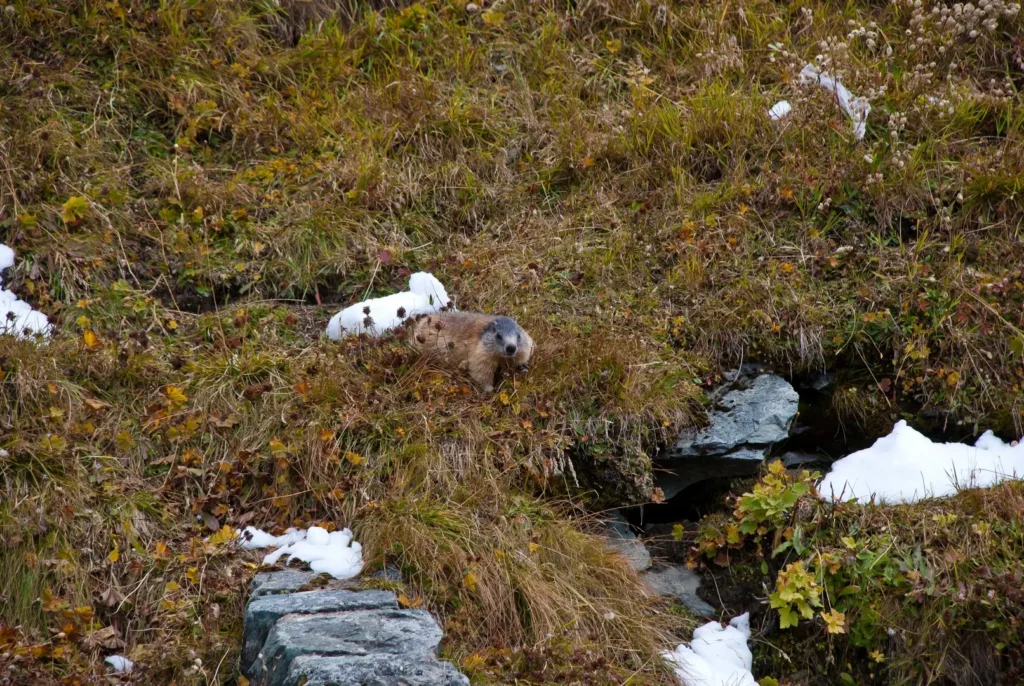
Reservoirs below
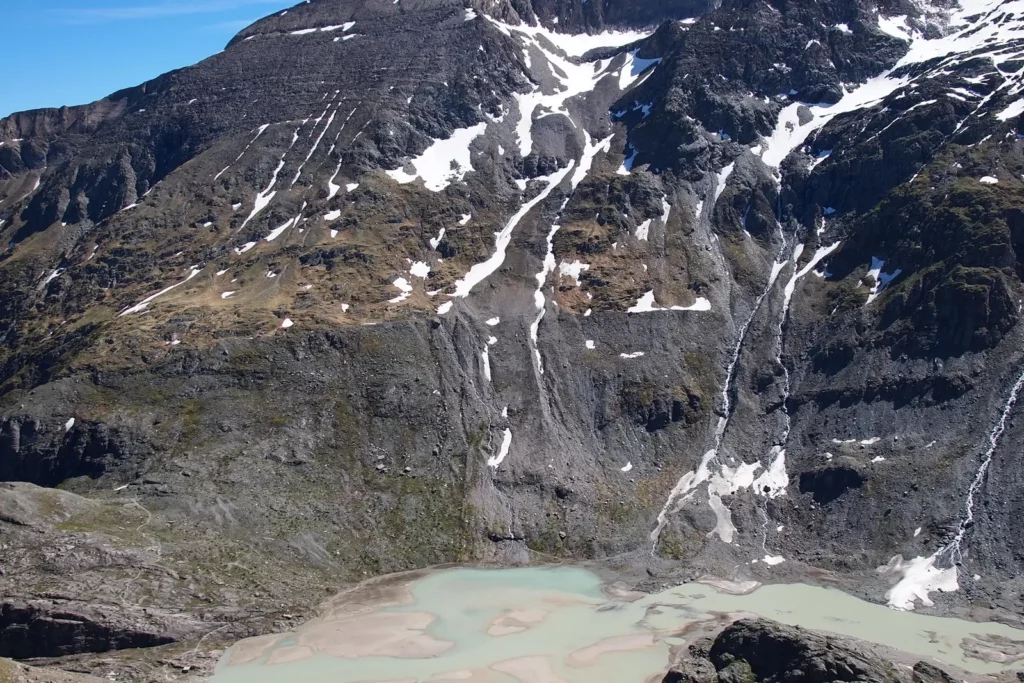
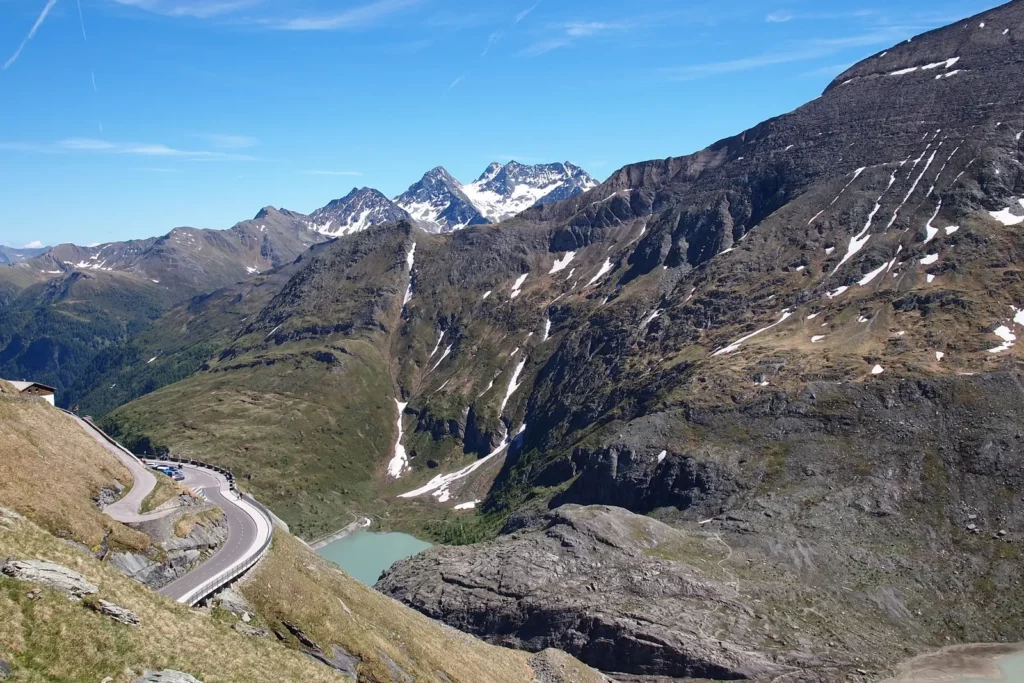
On this we say goodbye to the glacier and go down
We begin to descend, look back at the glacier
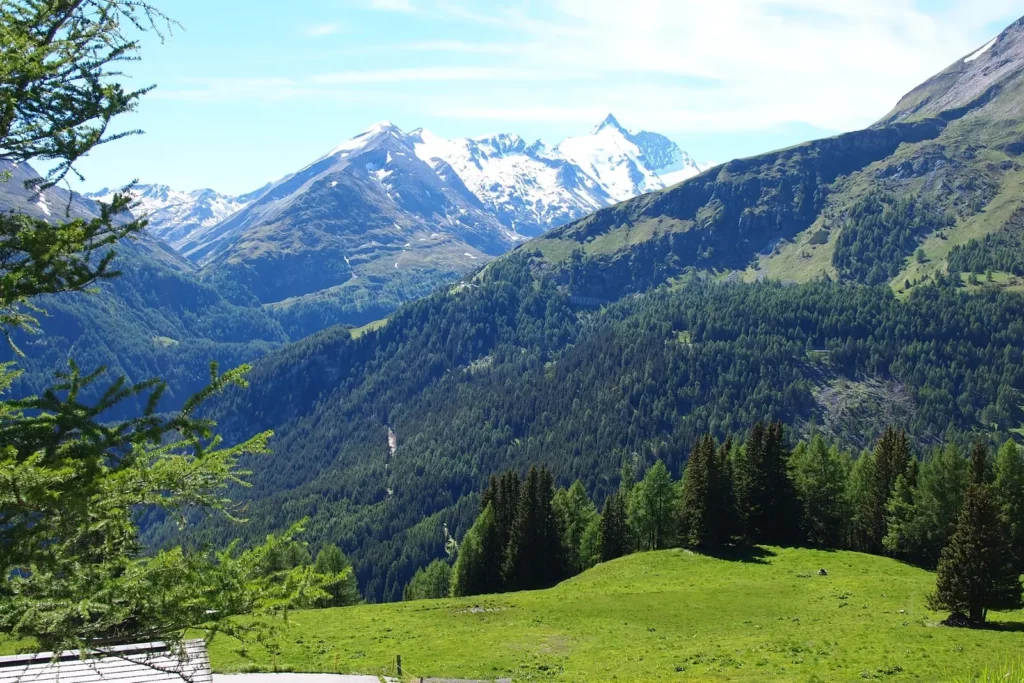
to the pass
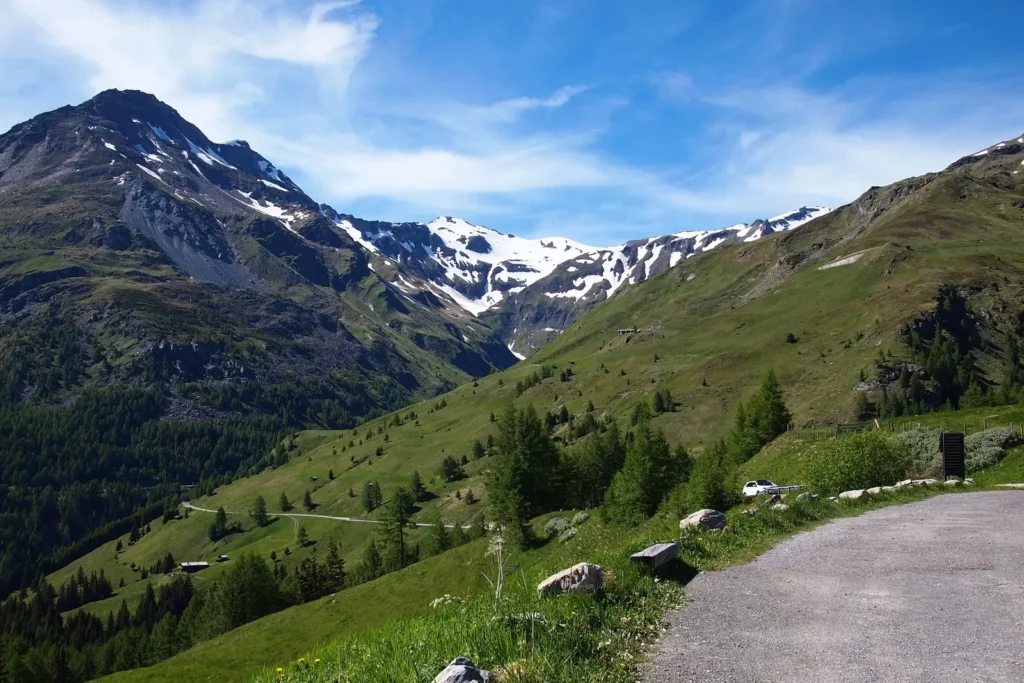
And now we are at the very bottom: Heiligenblut and one of the most popular views.
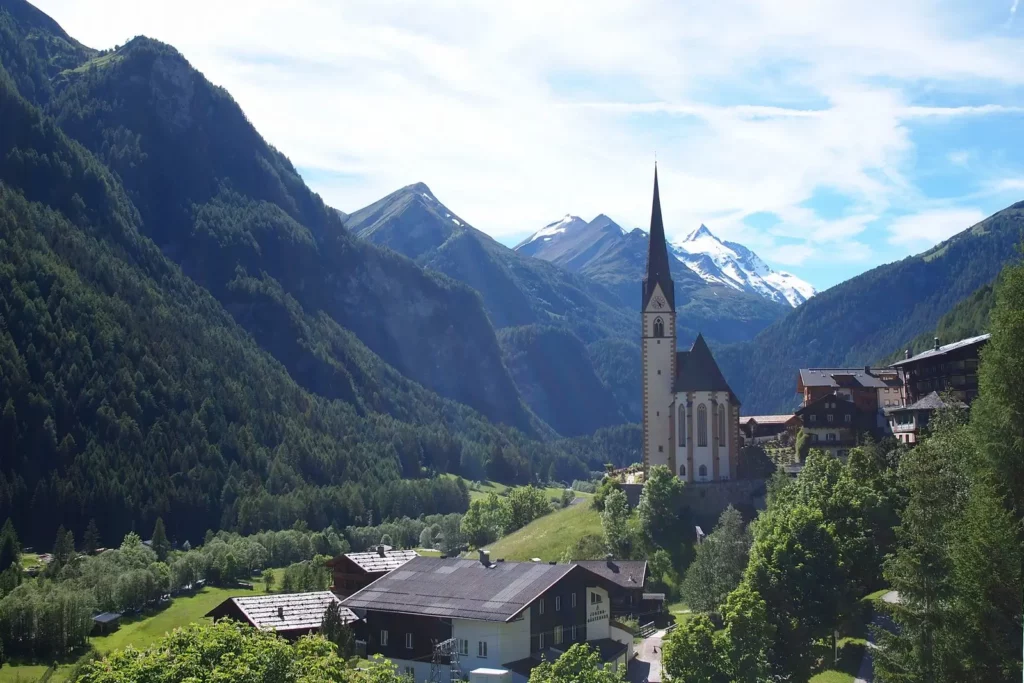
Almost immediately outside the village, on the road towards Linz, there will be a large waterfall Jungfernsprung with a parking lot nearby.
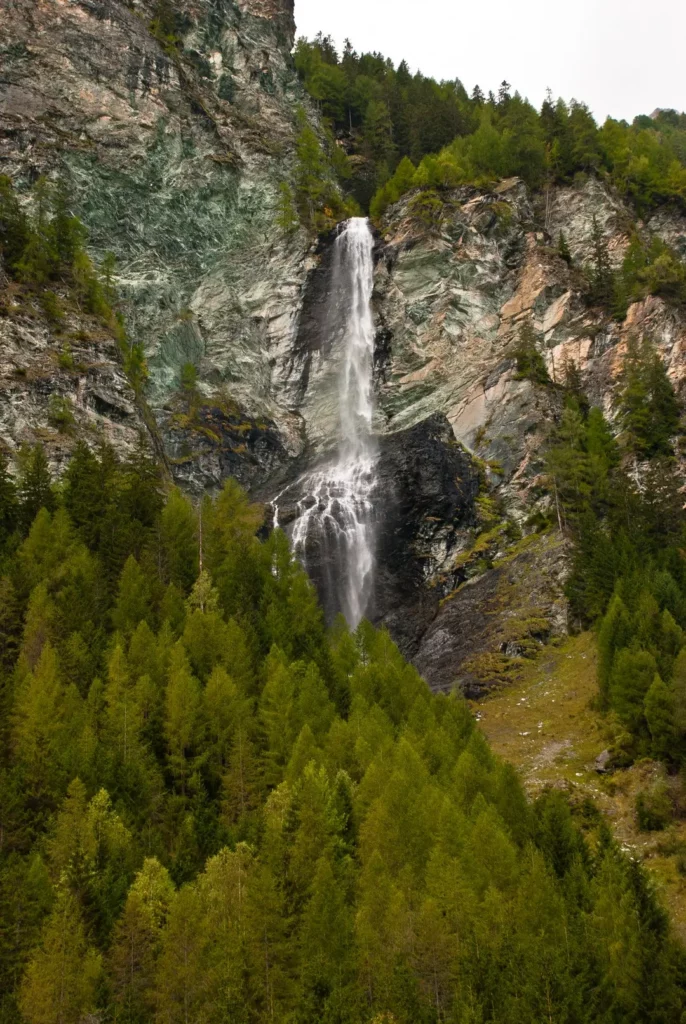
In other seasons
I will add a couple more photos of high alpine road Grossglockner Strasse in the end of September and rainy July.
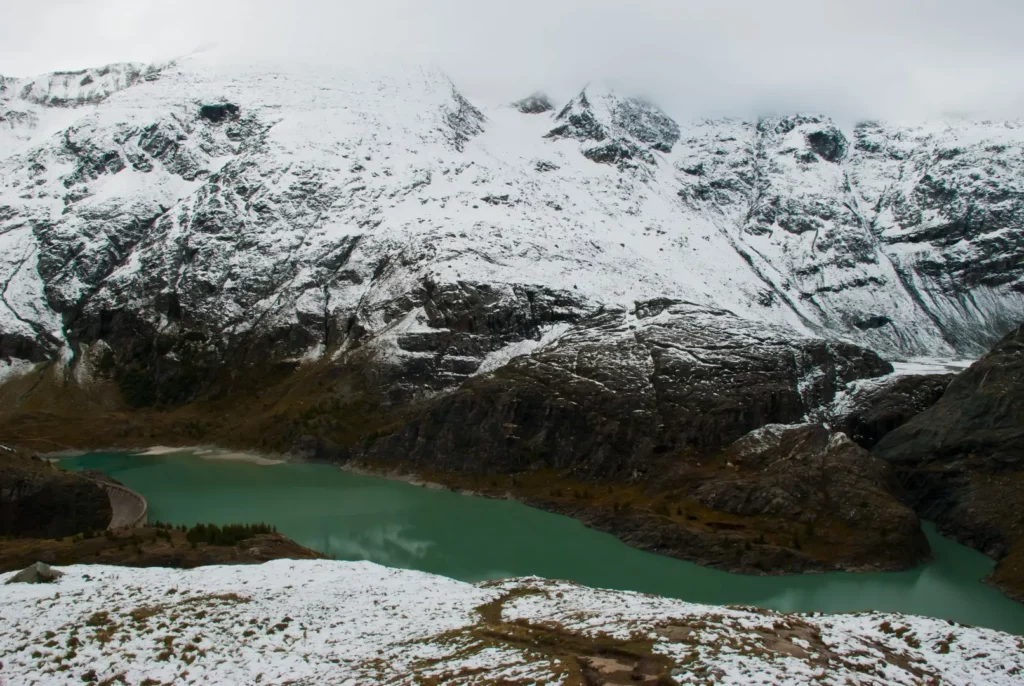
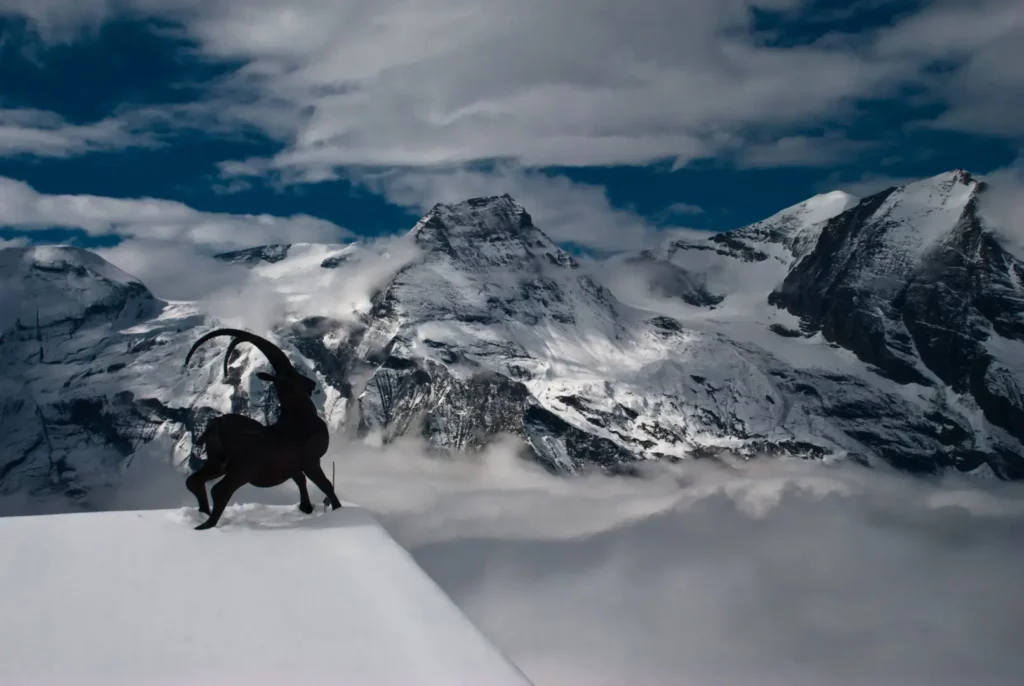
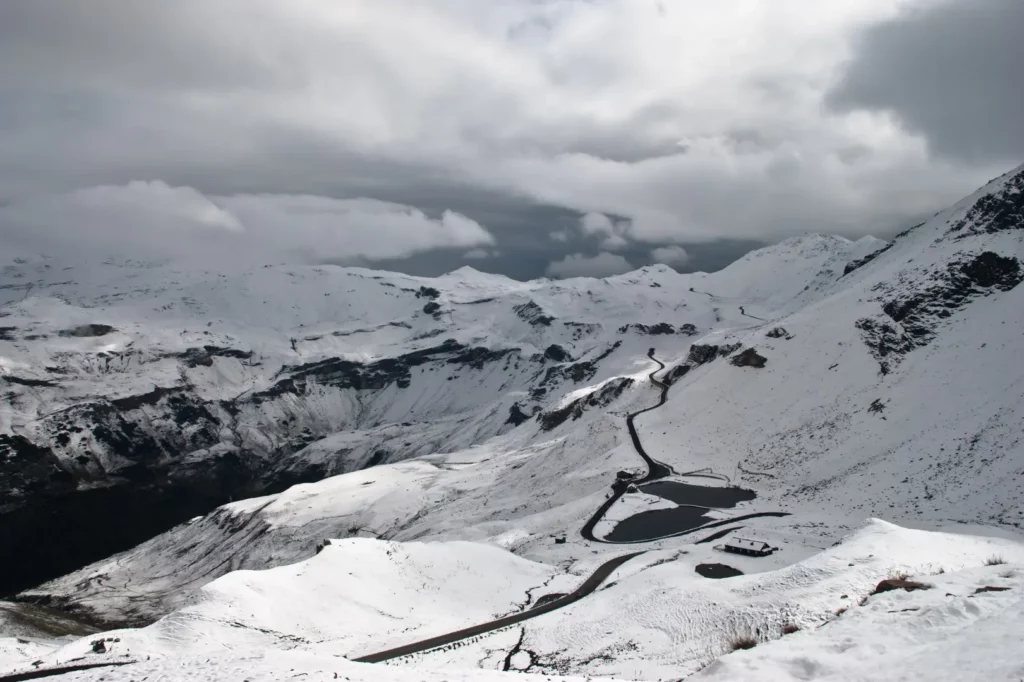
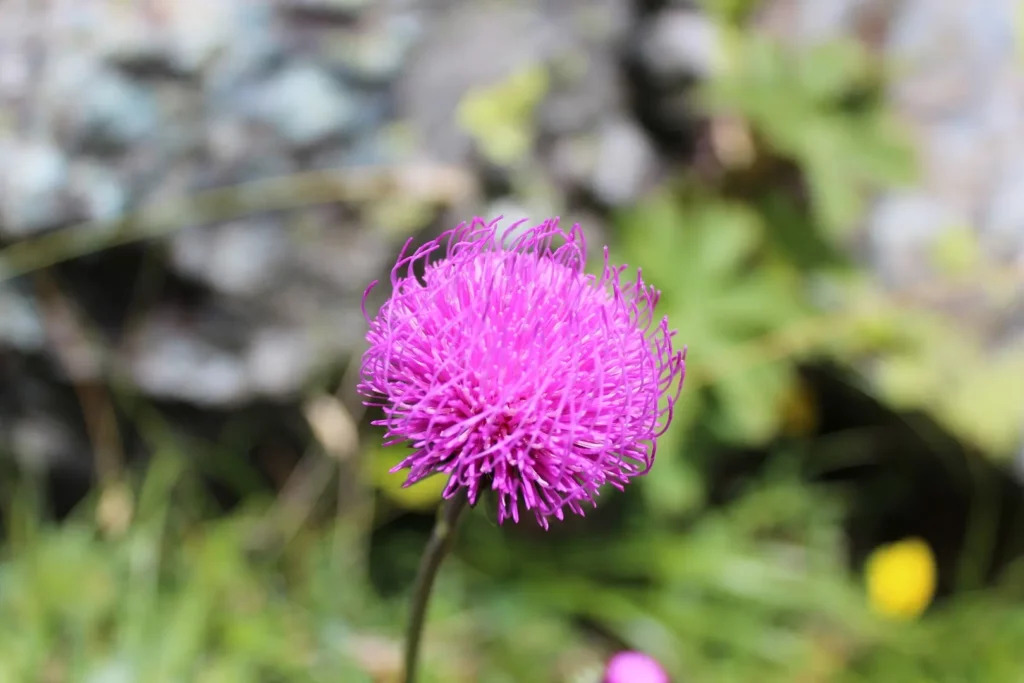
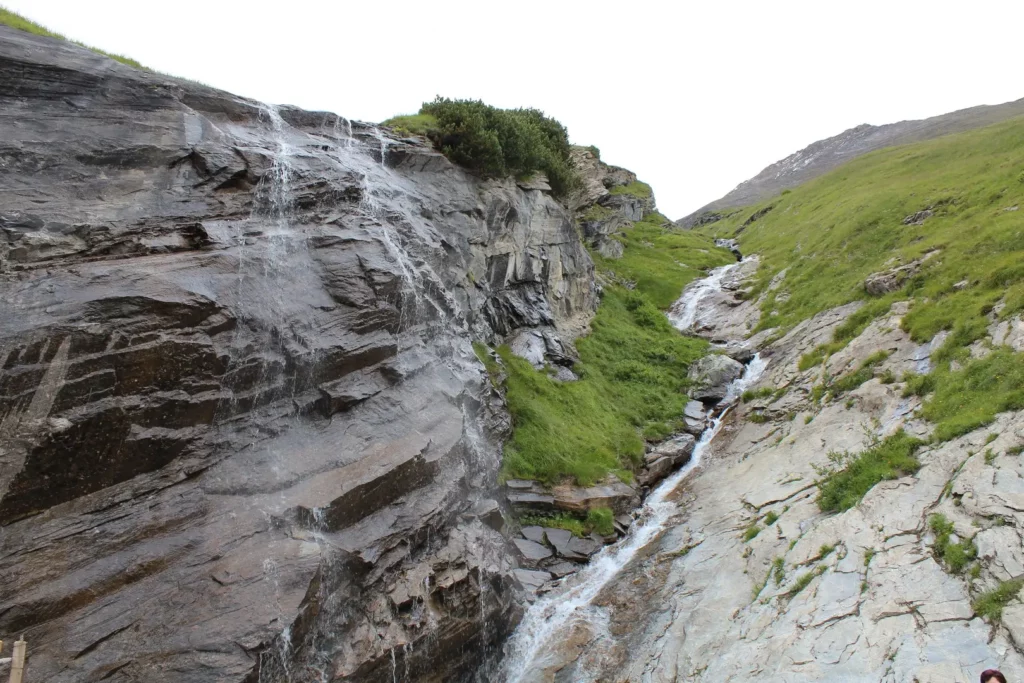
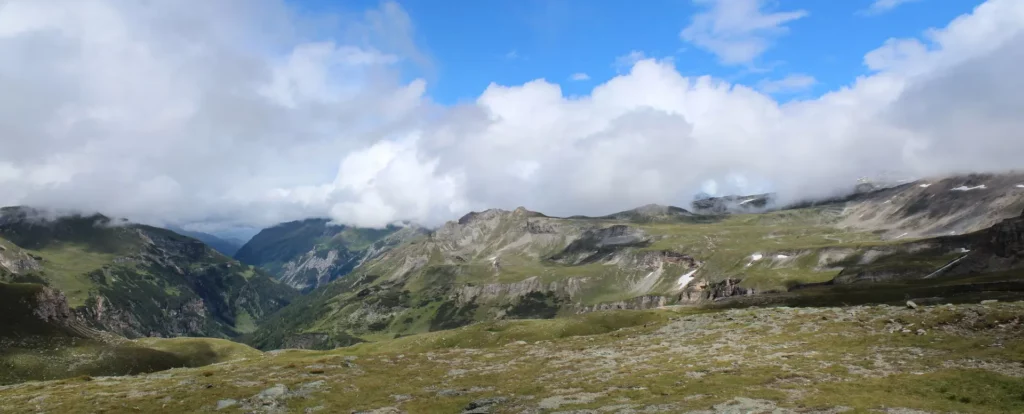
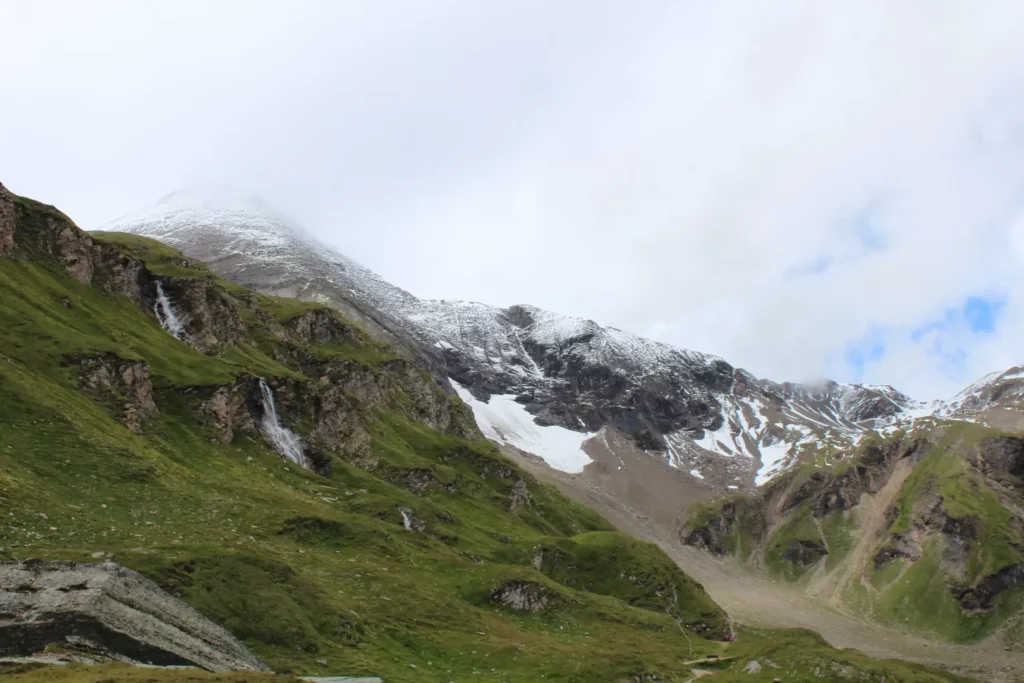
Holidays in the region around Zell-am-See – #Zell-am-See
Do you enjoy the site without cookies? This means that I work for you at my own expense.
Perhaps you would like to support my work here.
Or change your cookie settings here. I don’t use personalized ads

